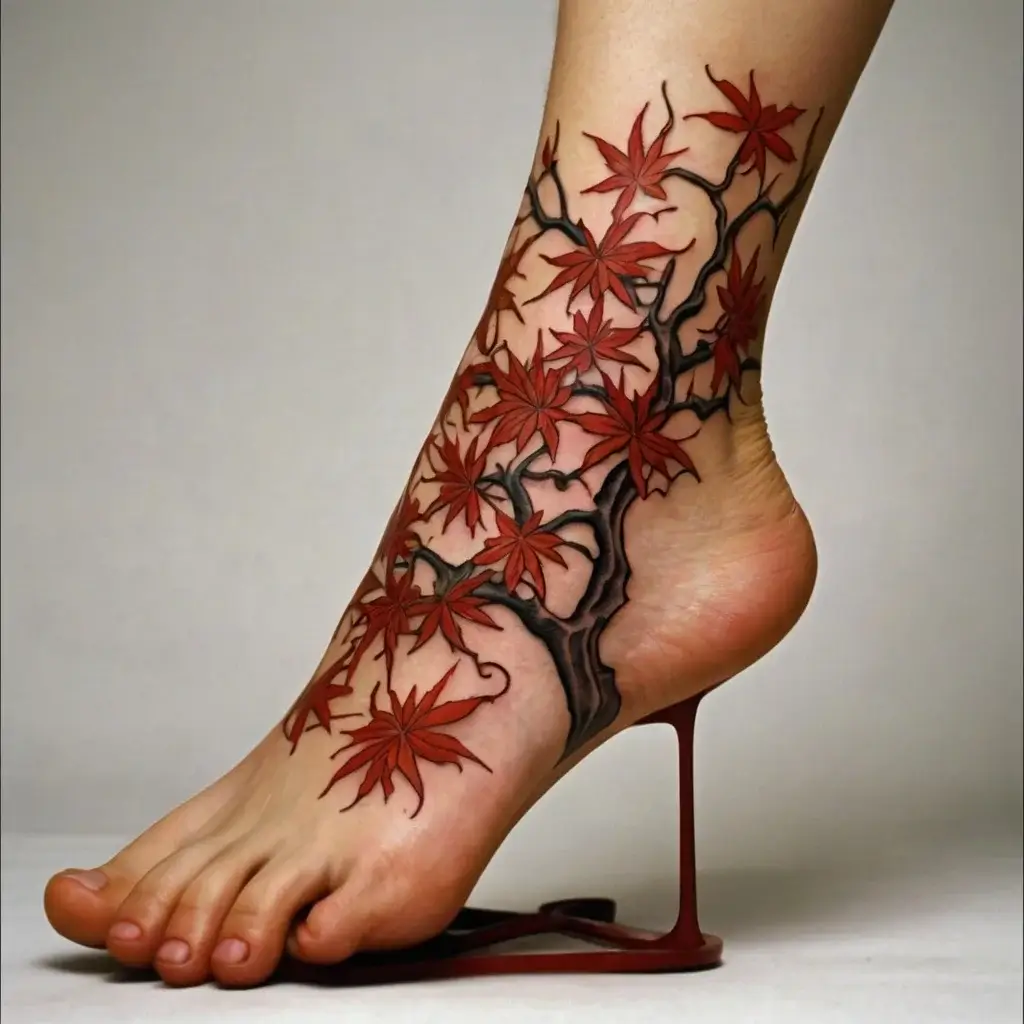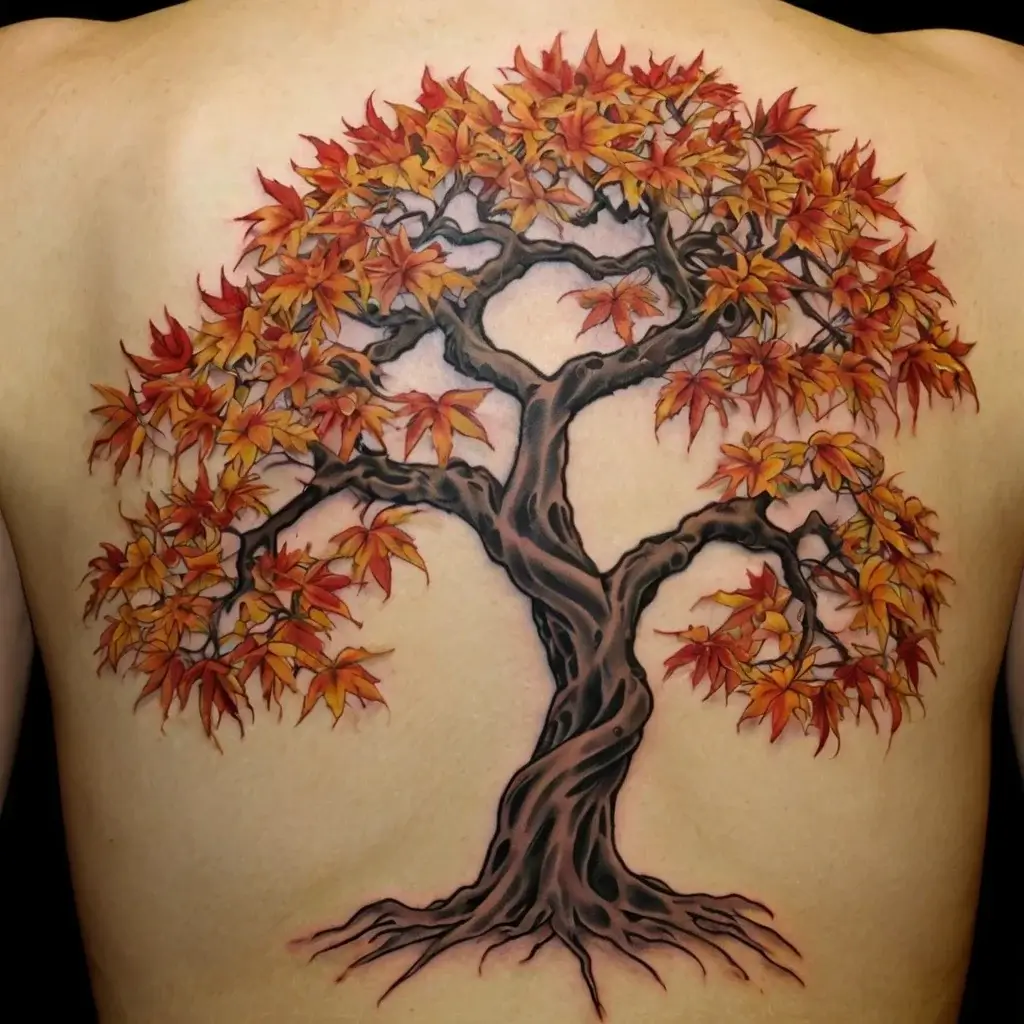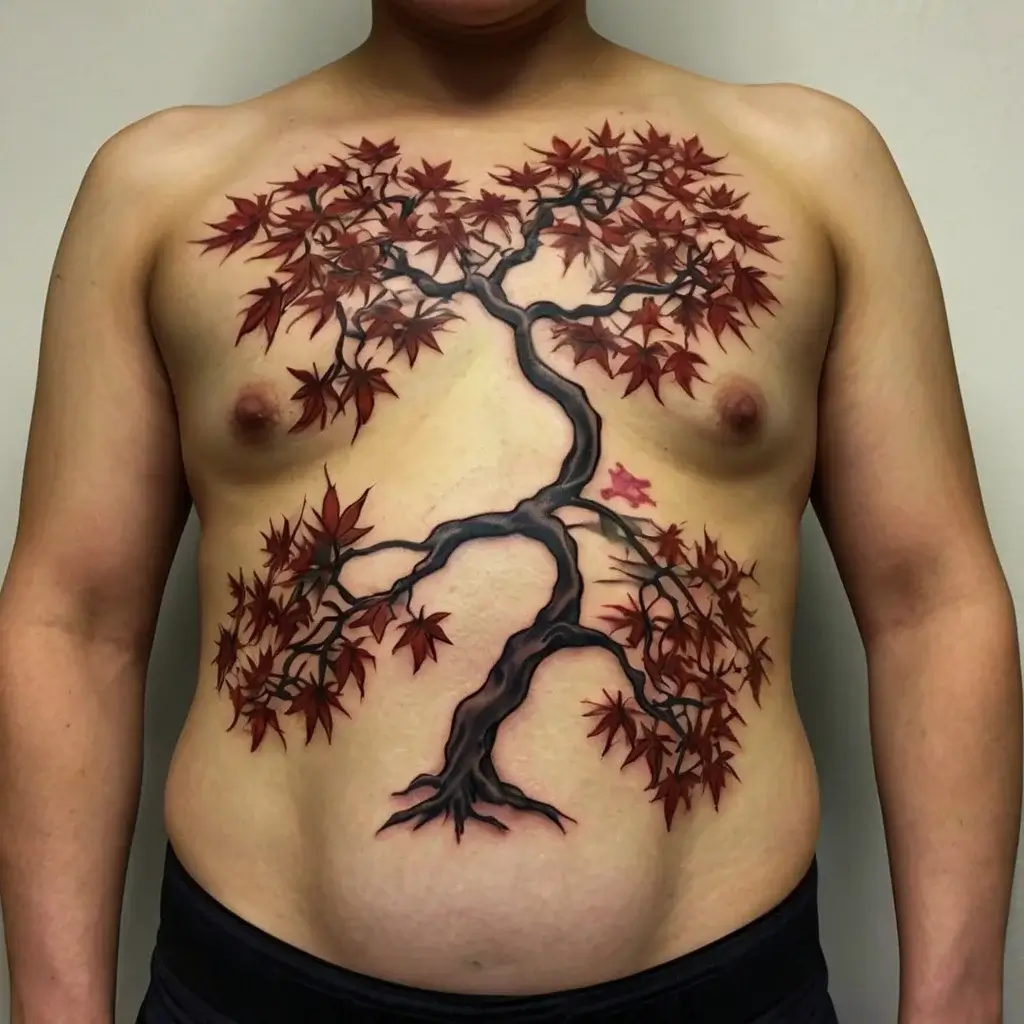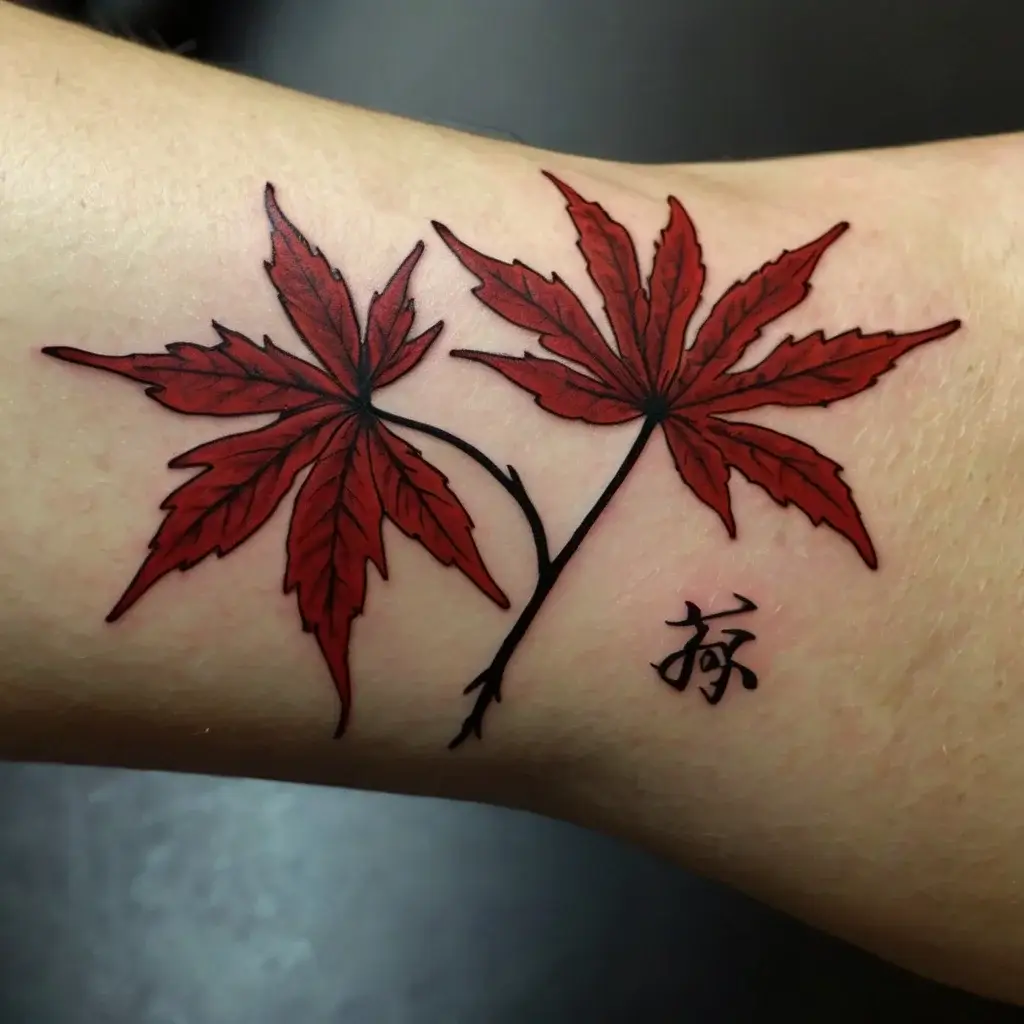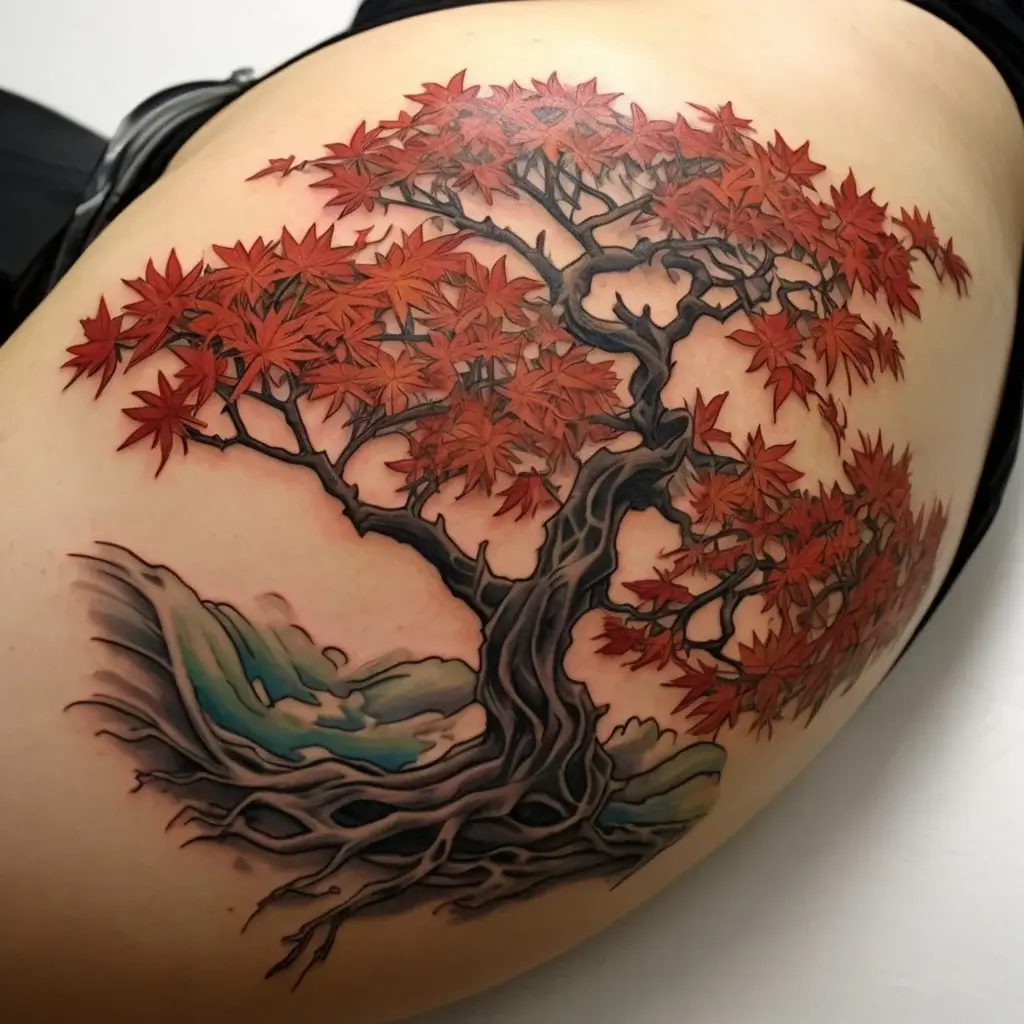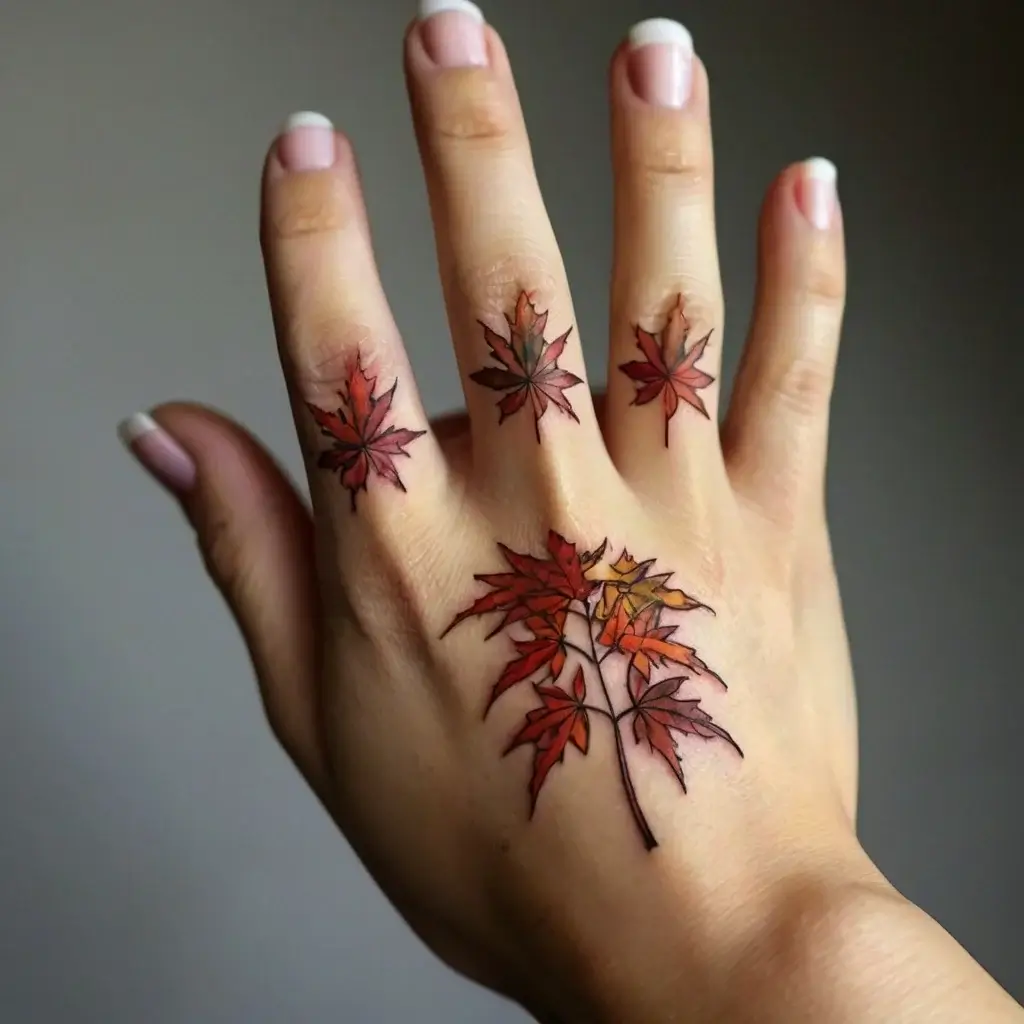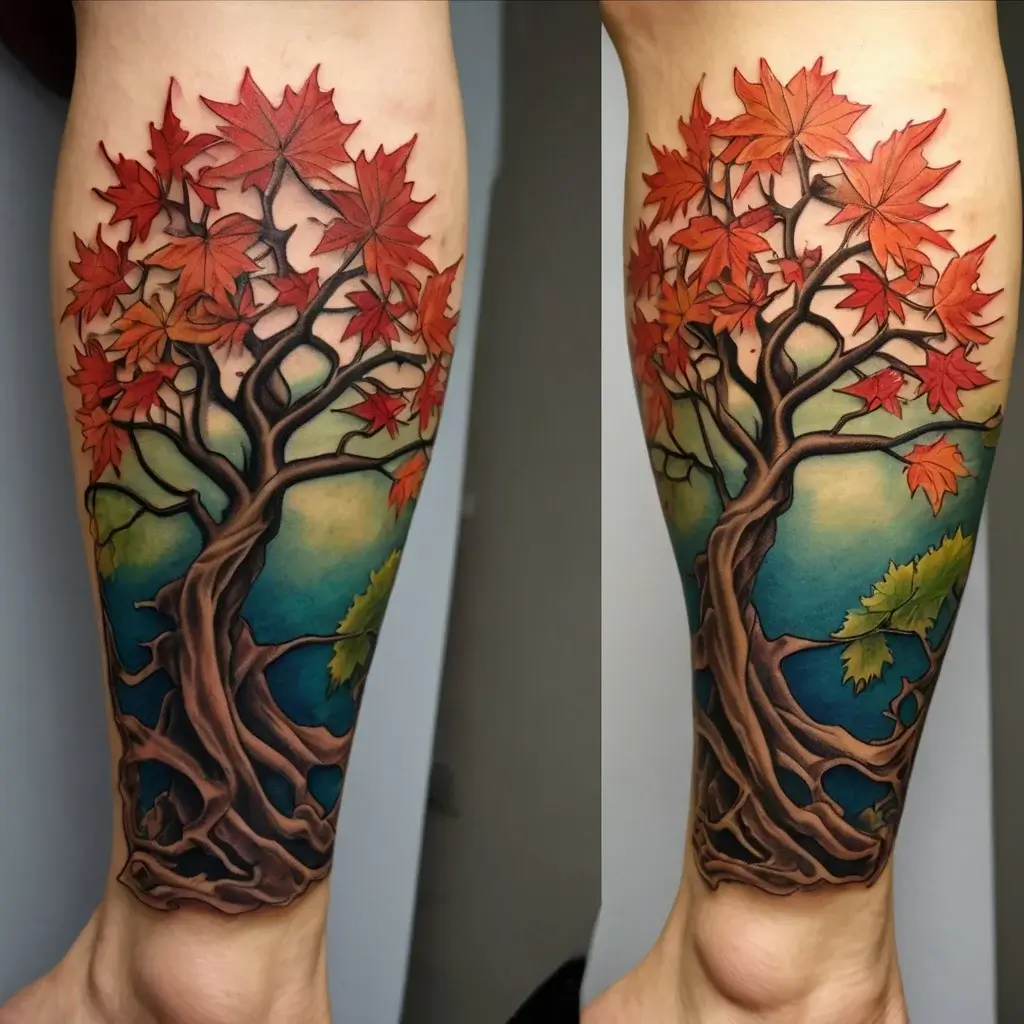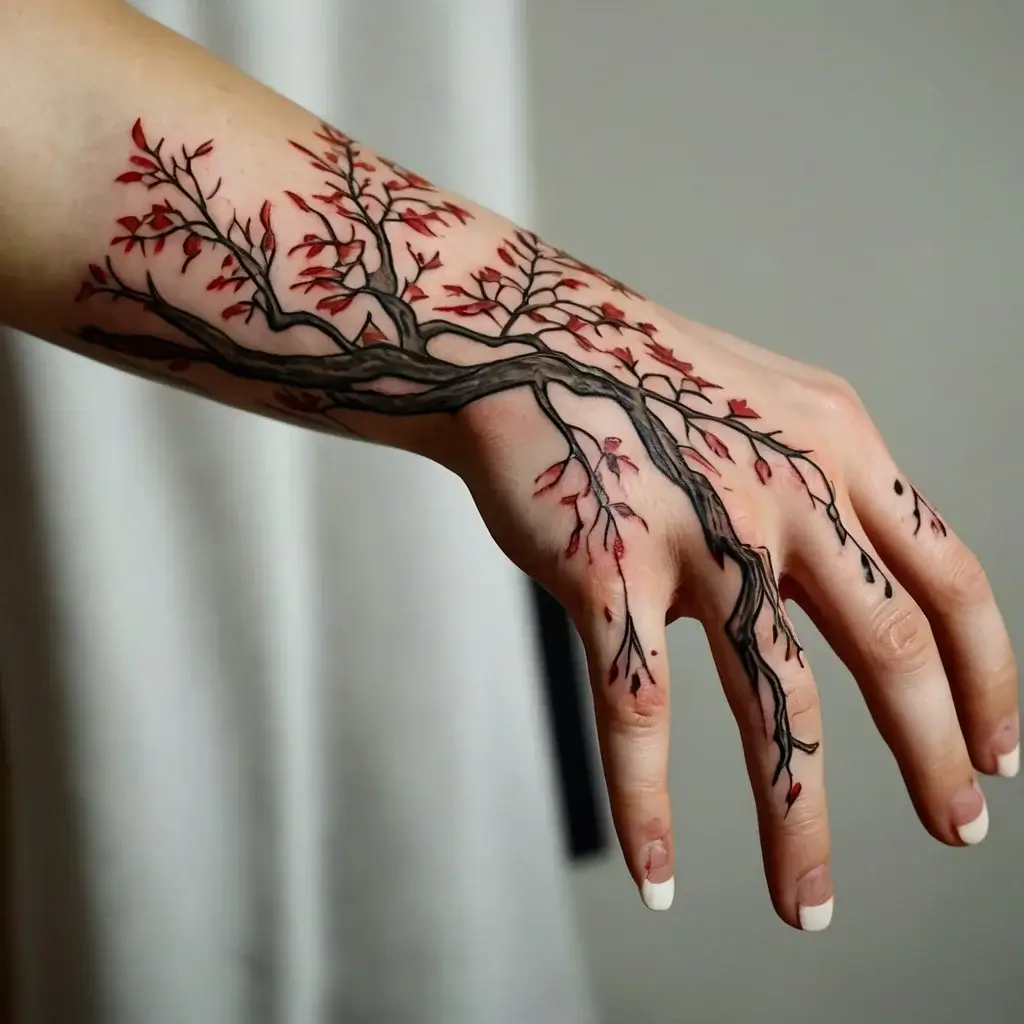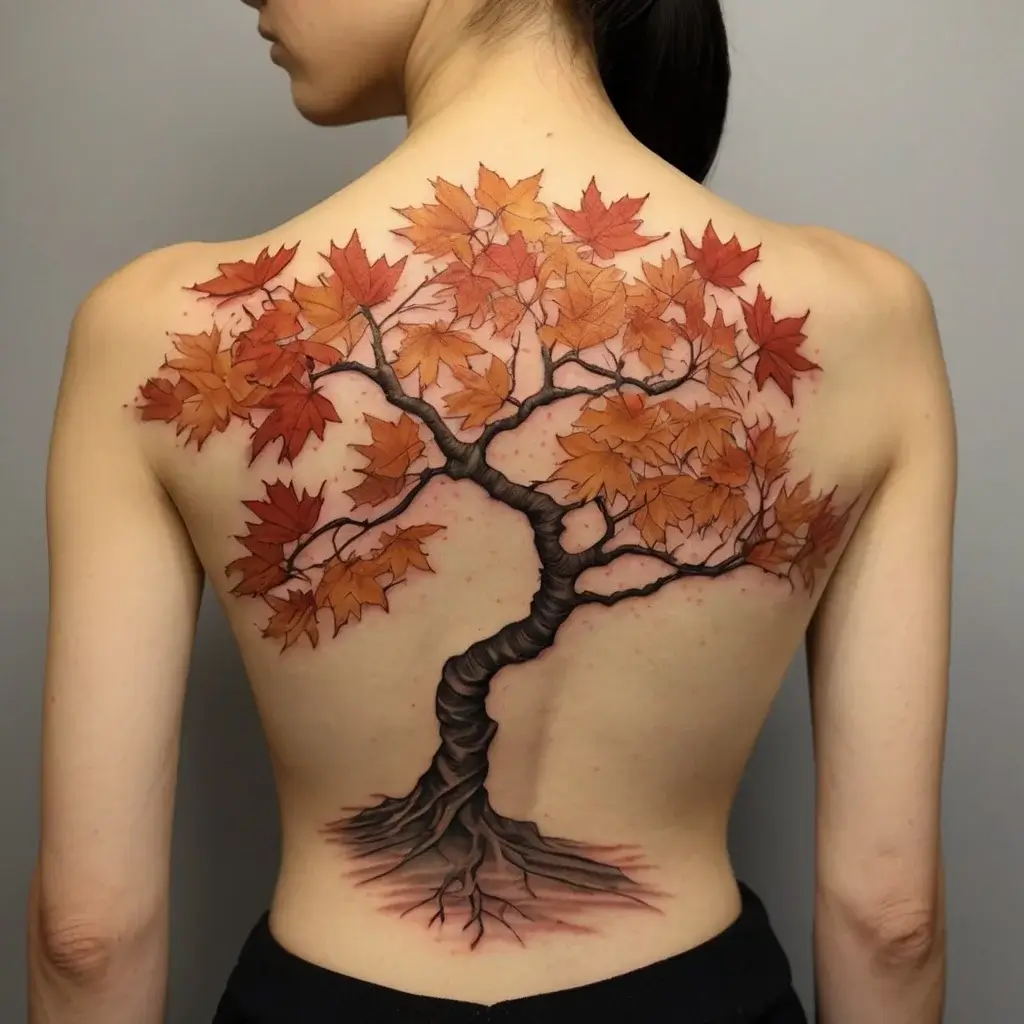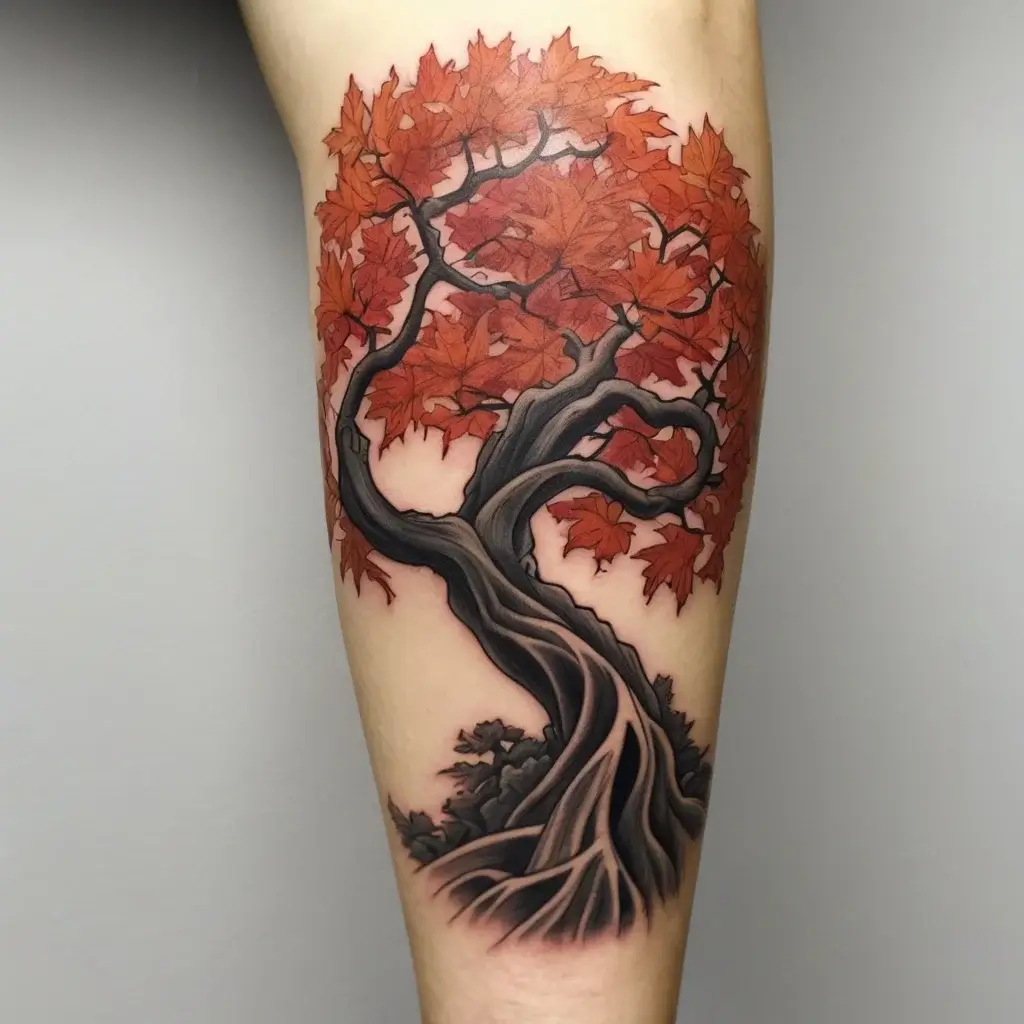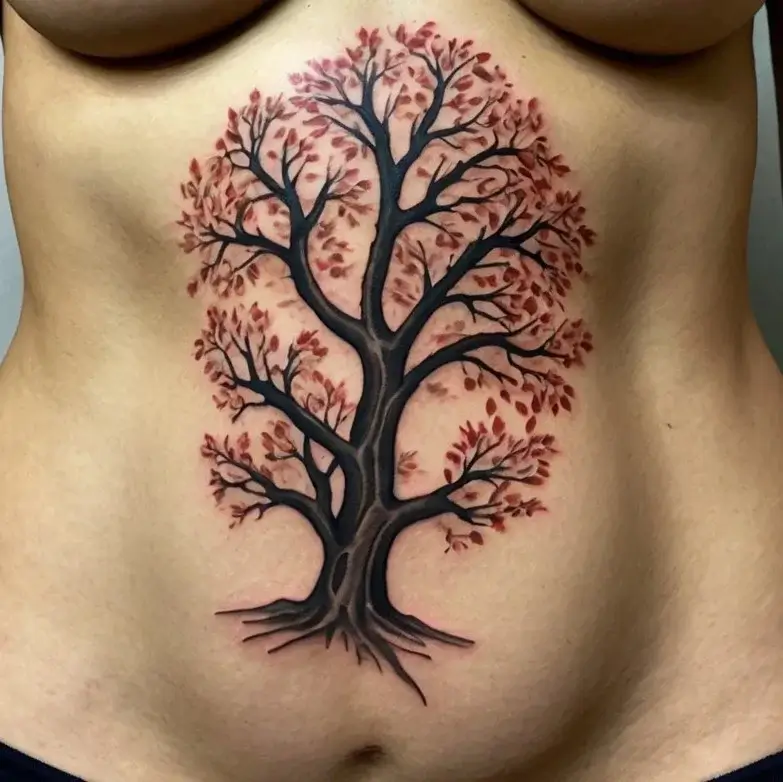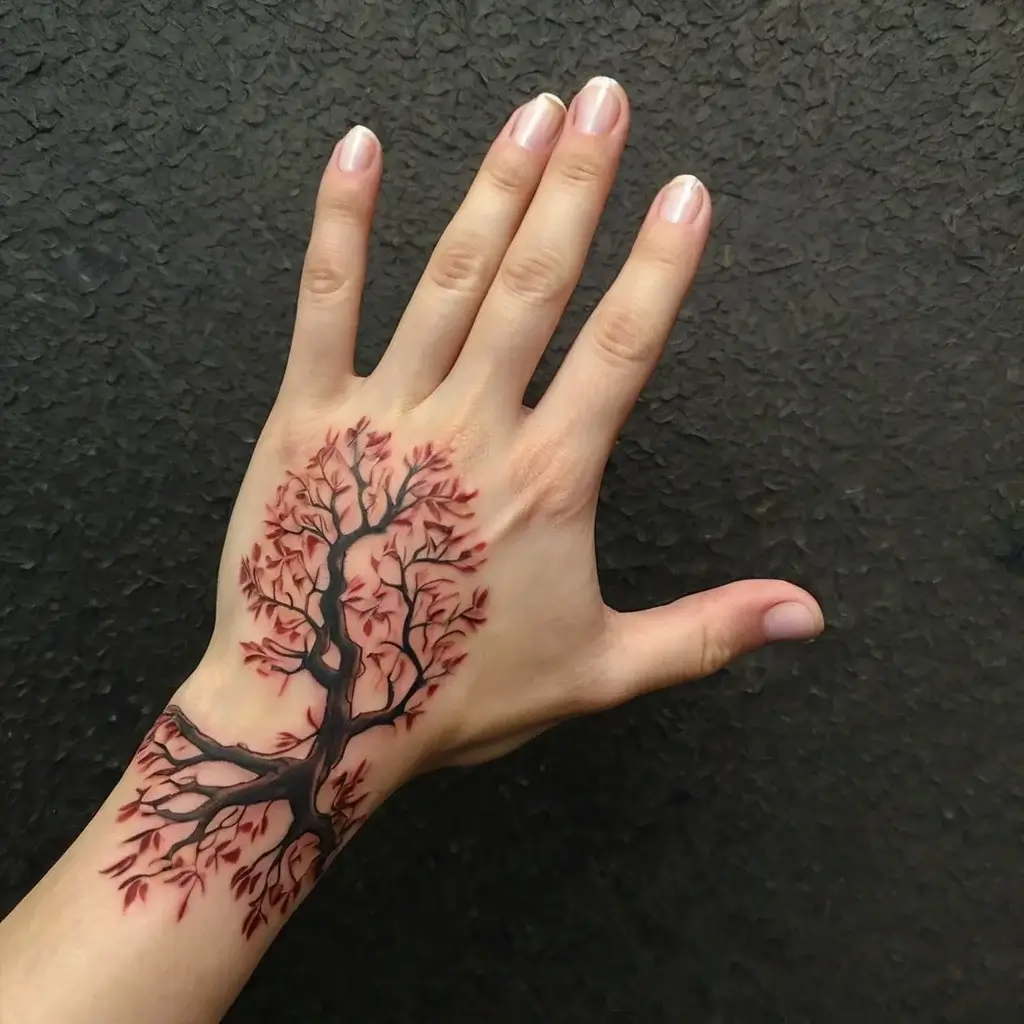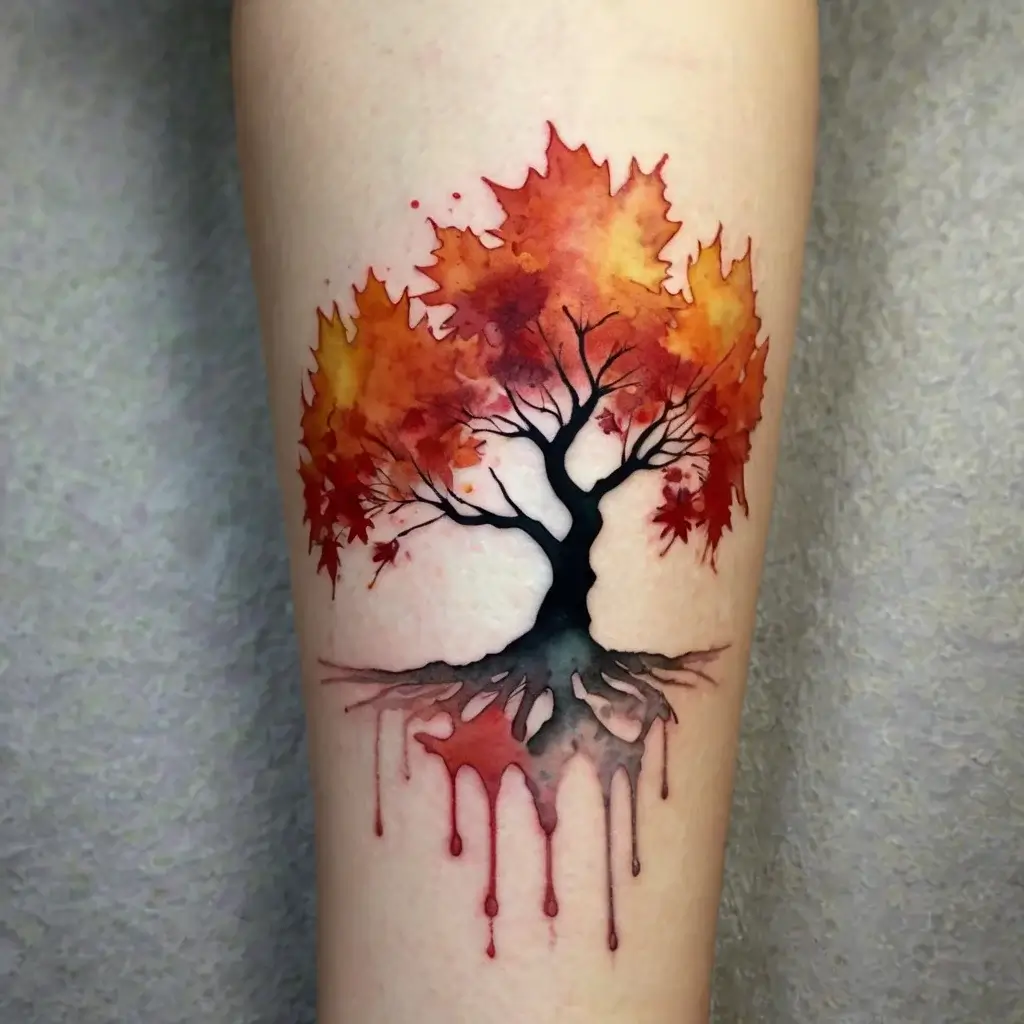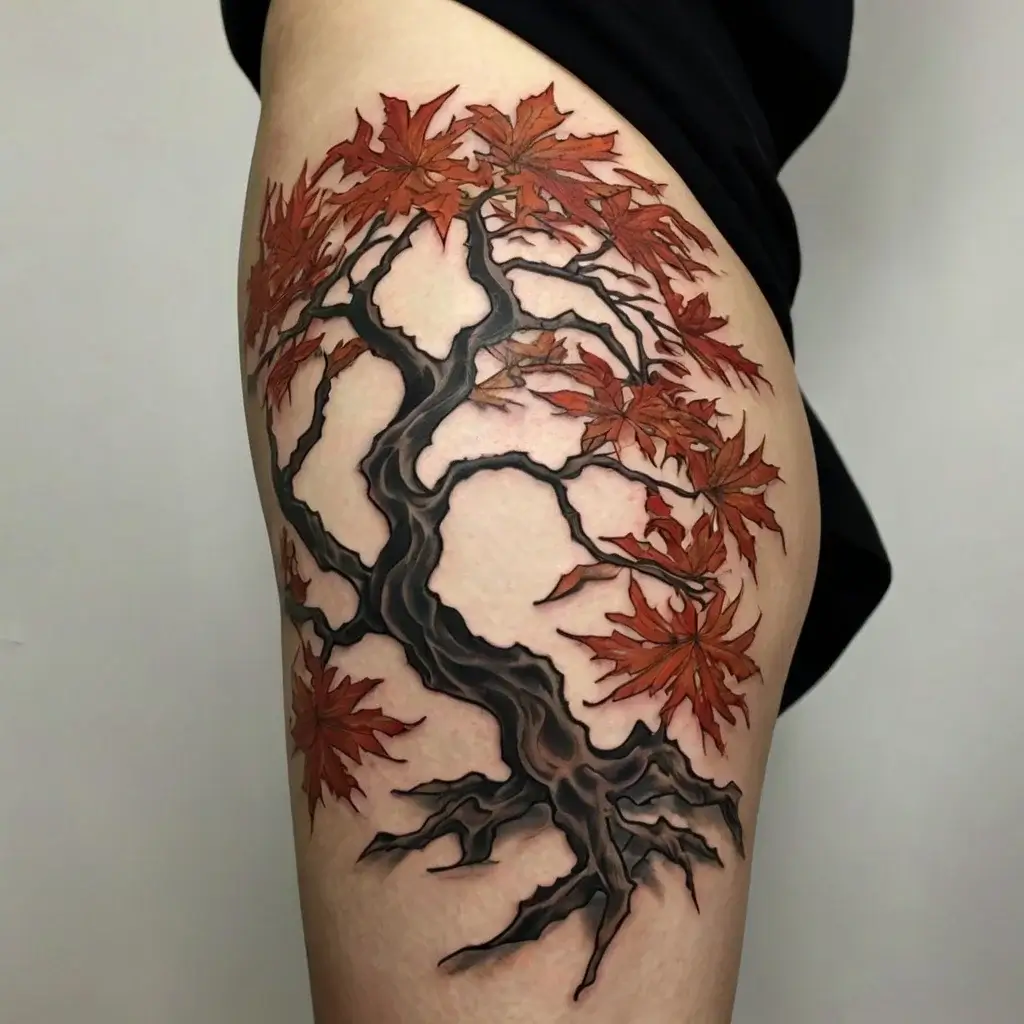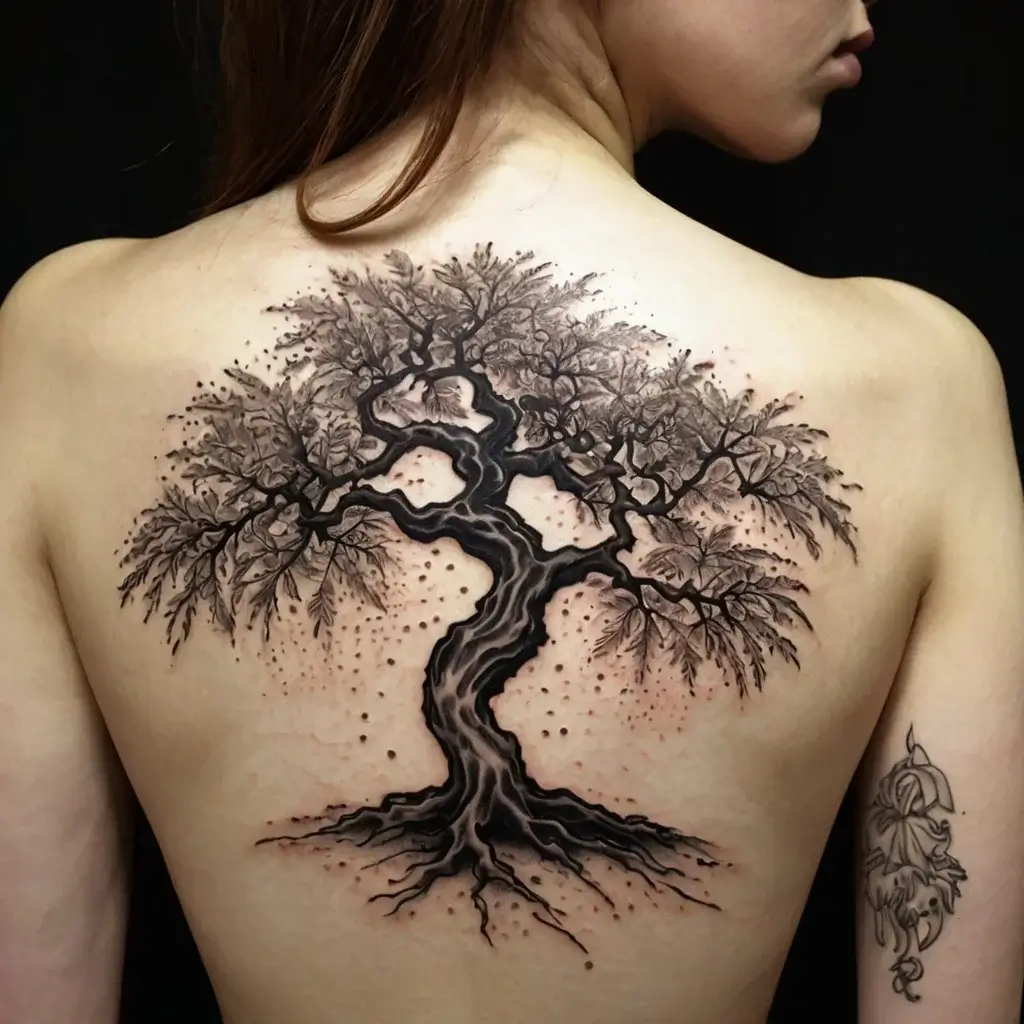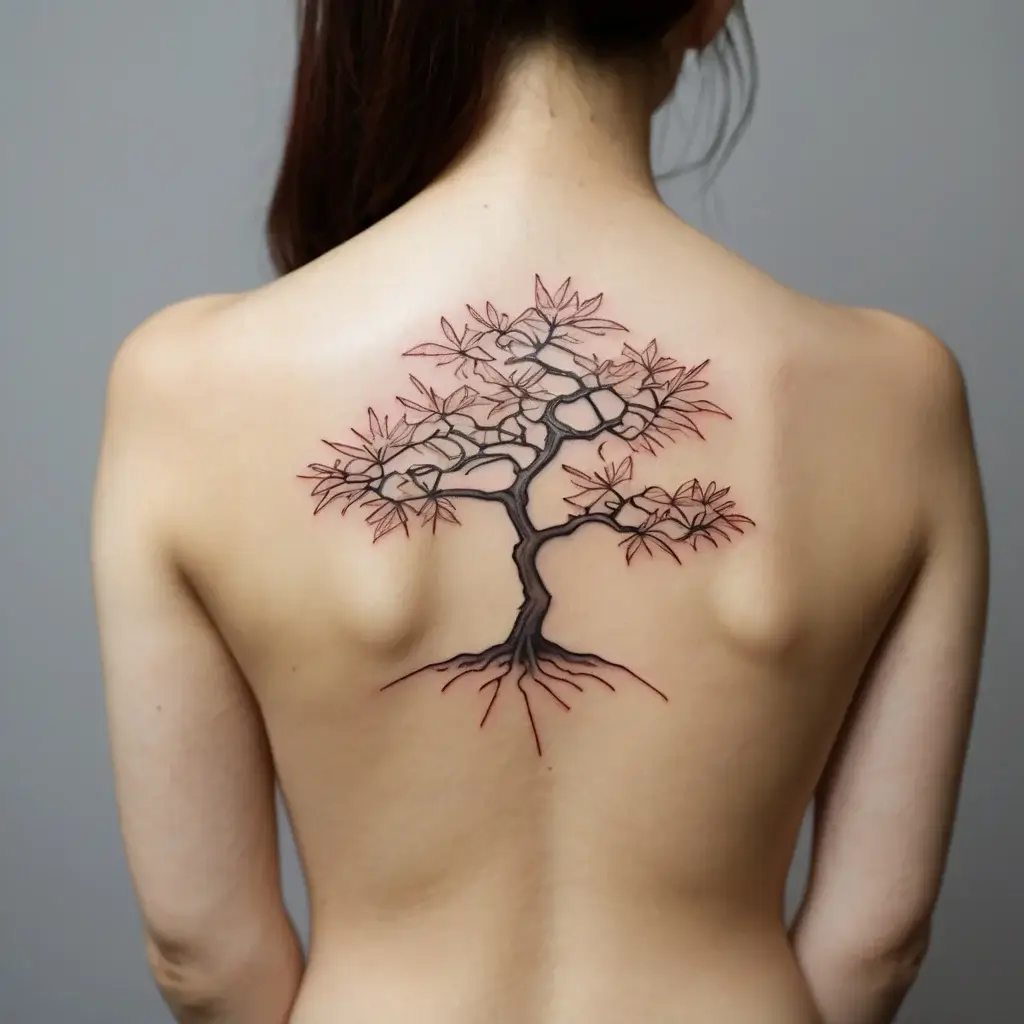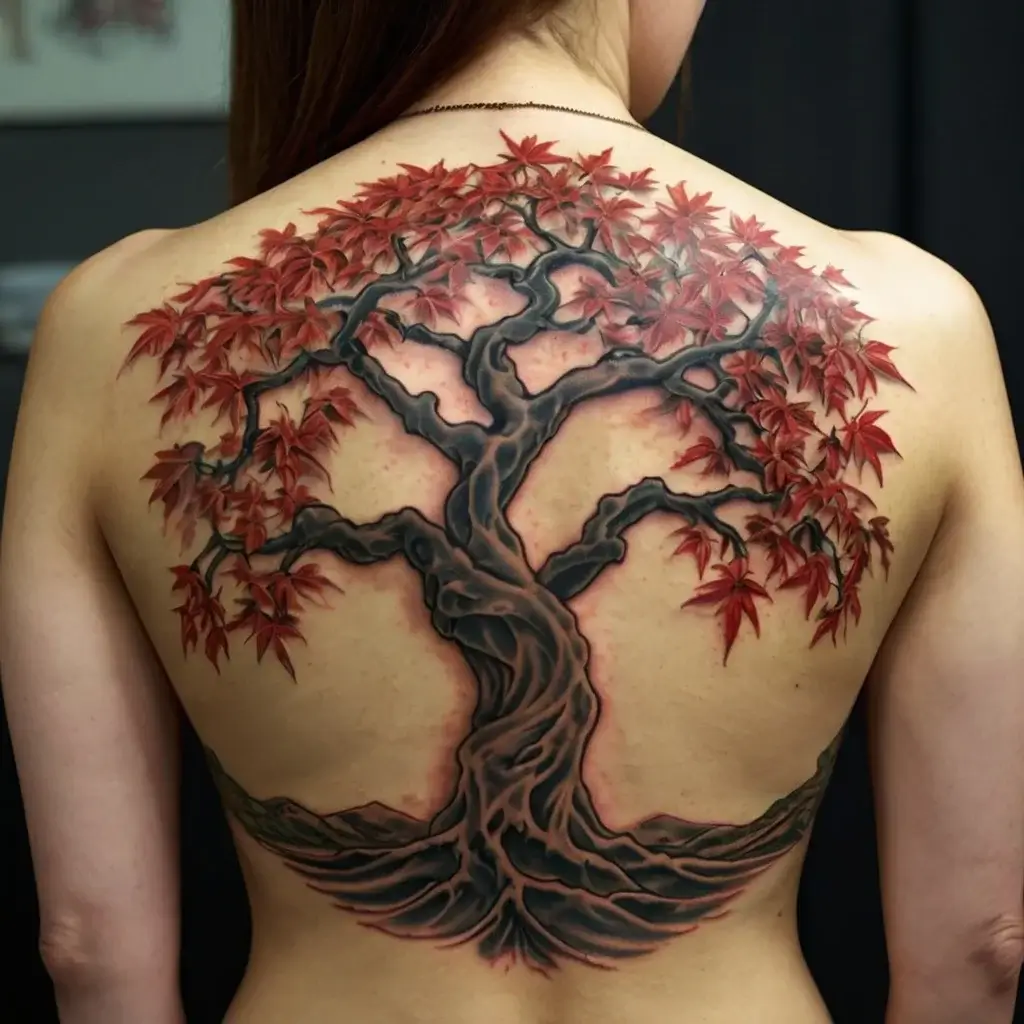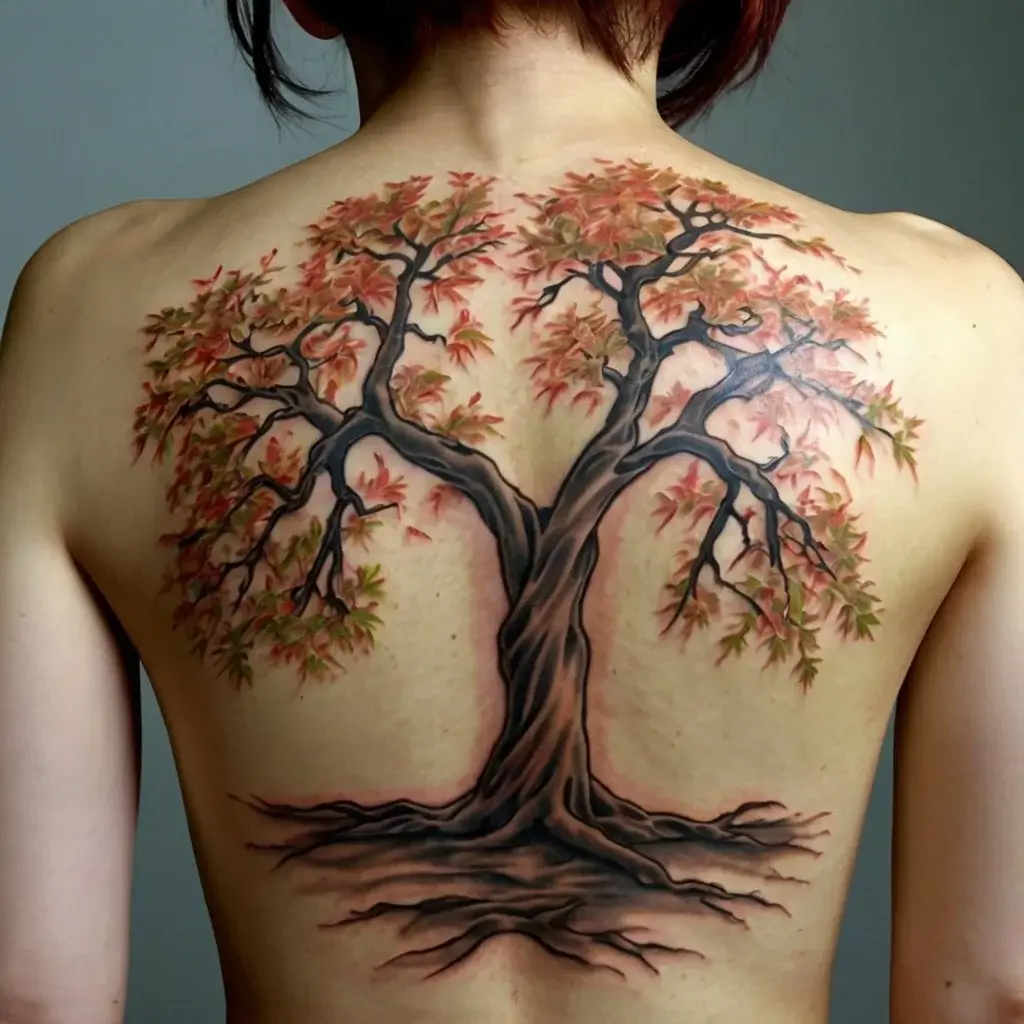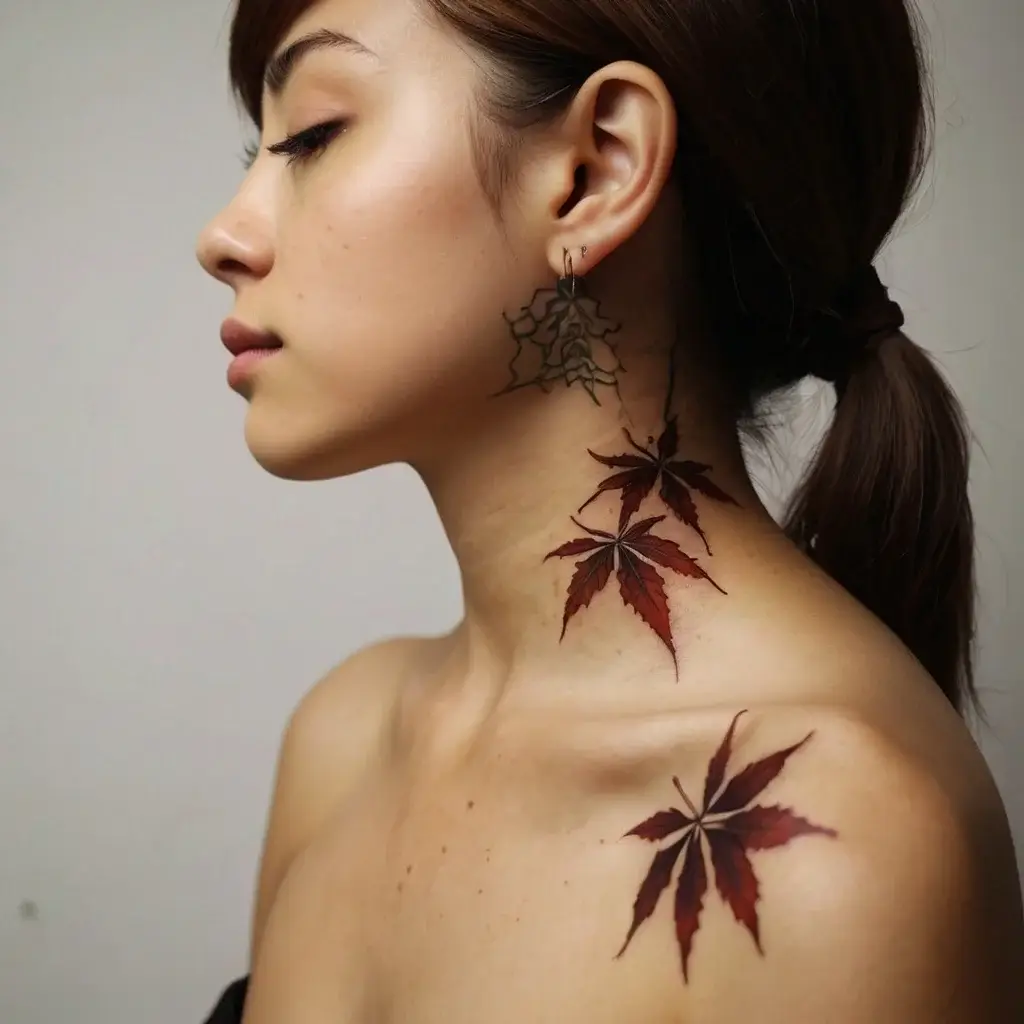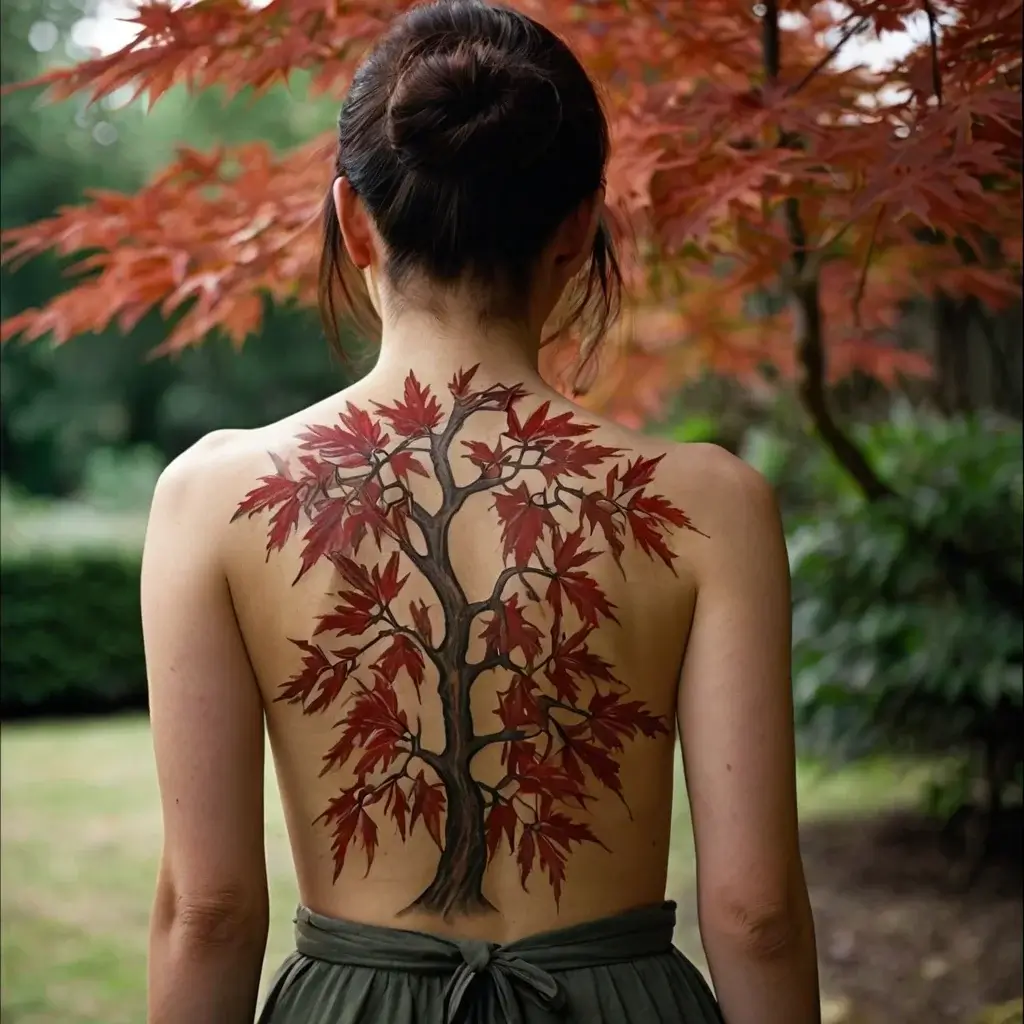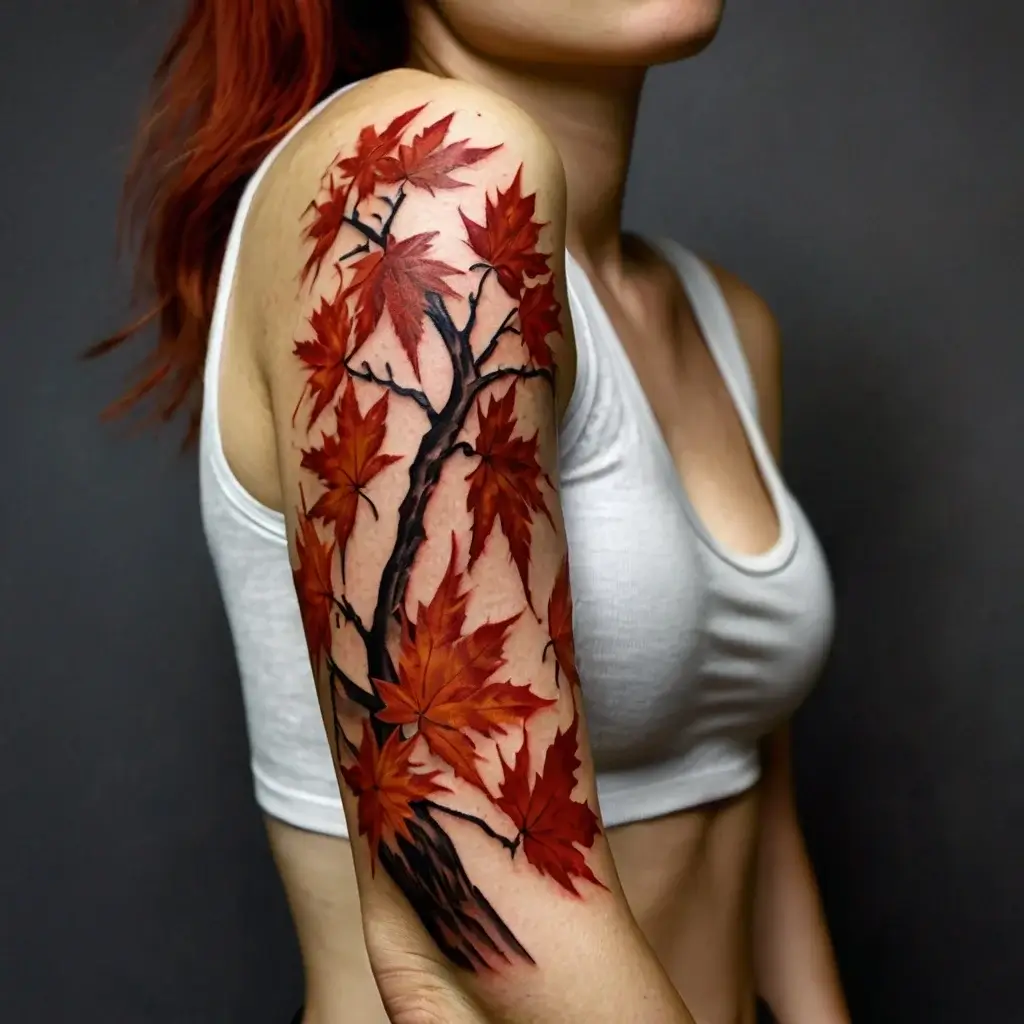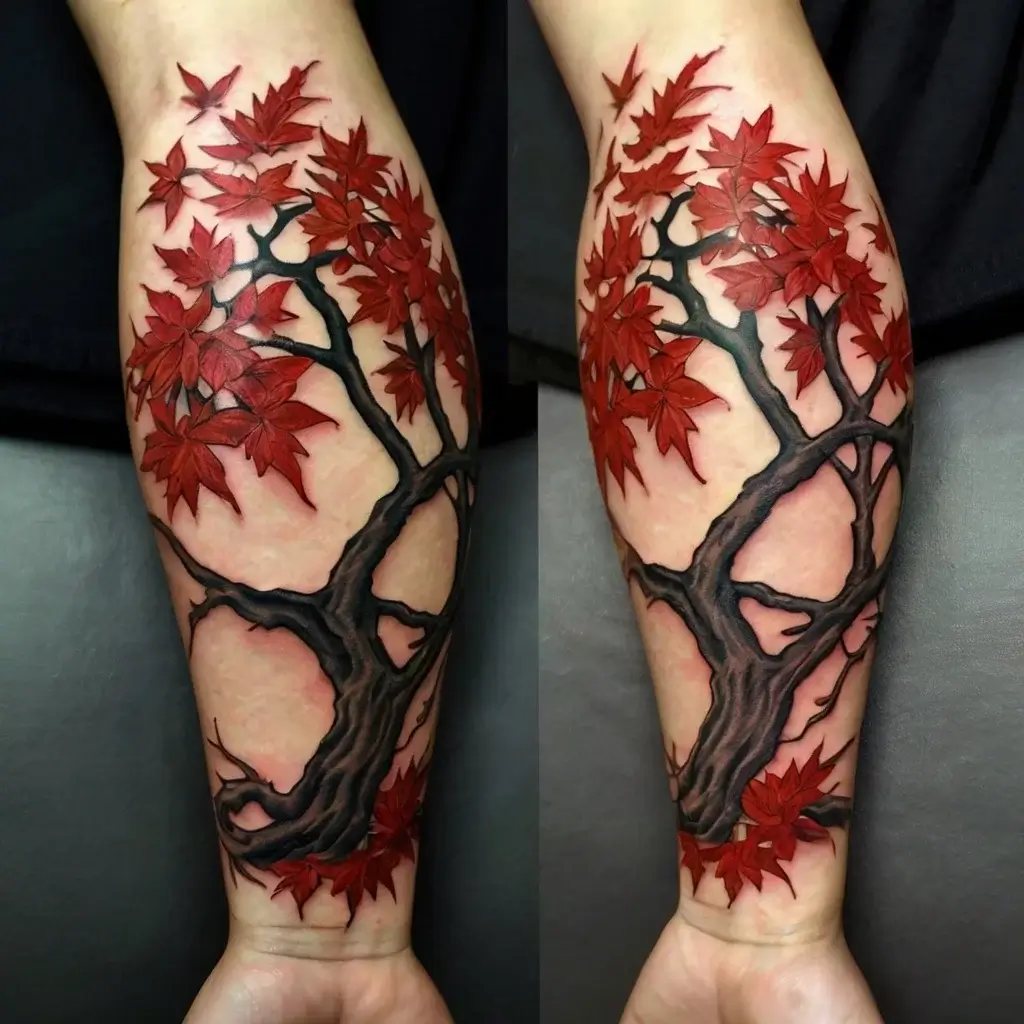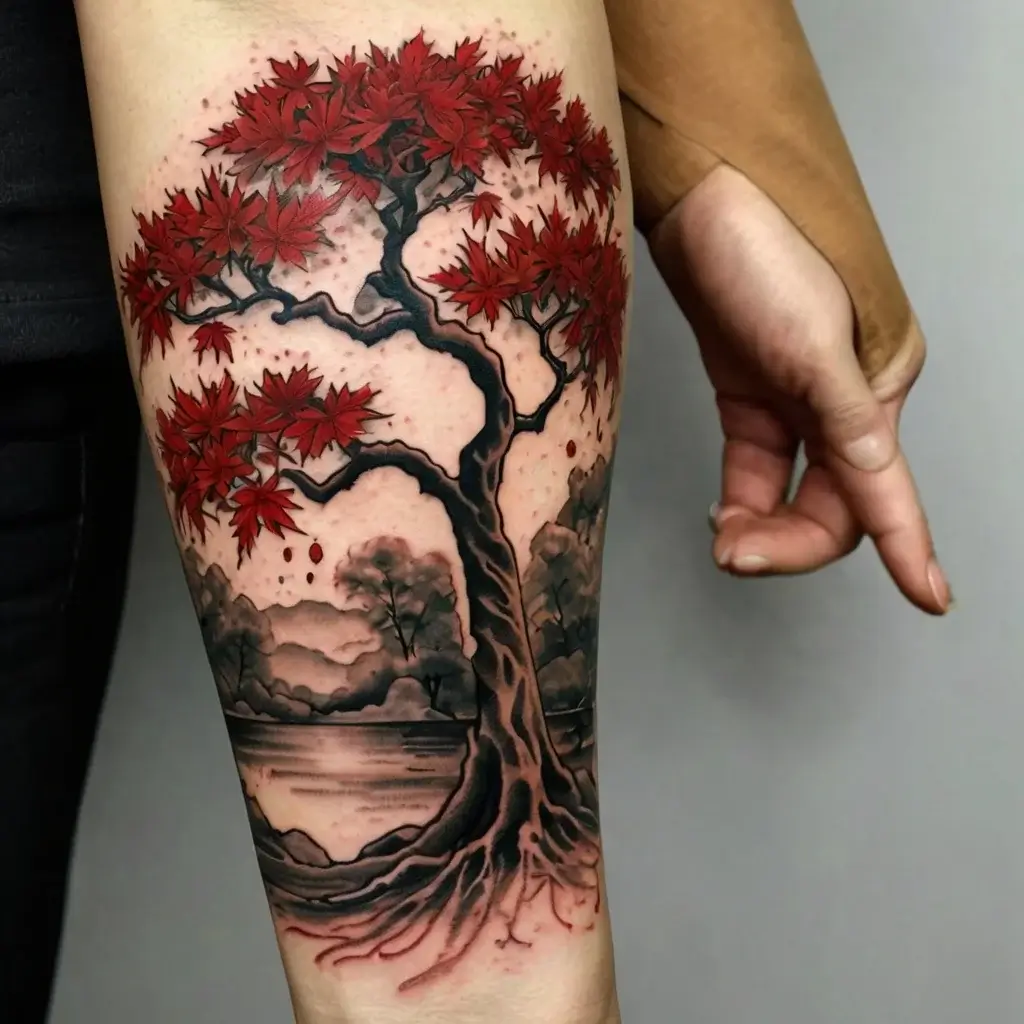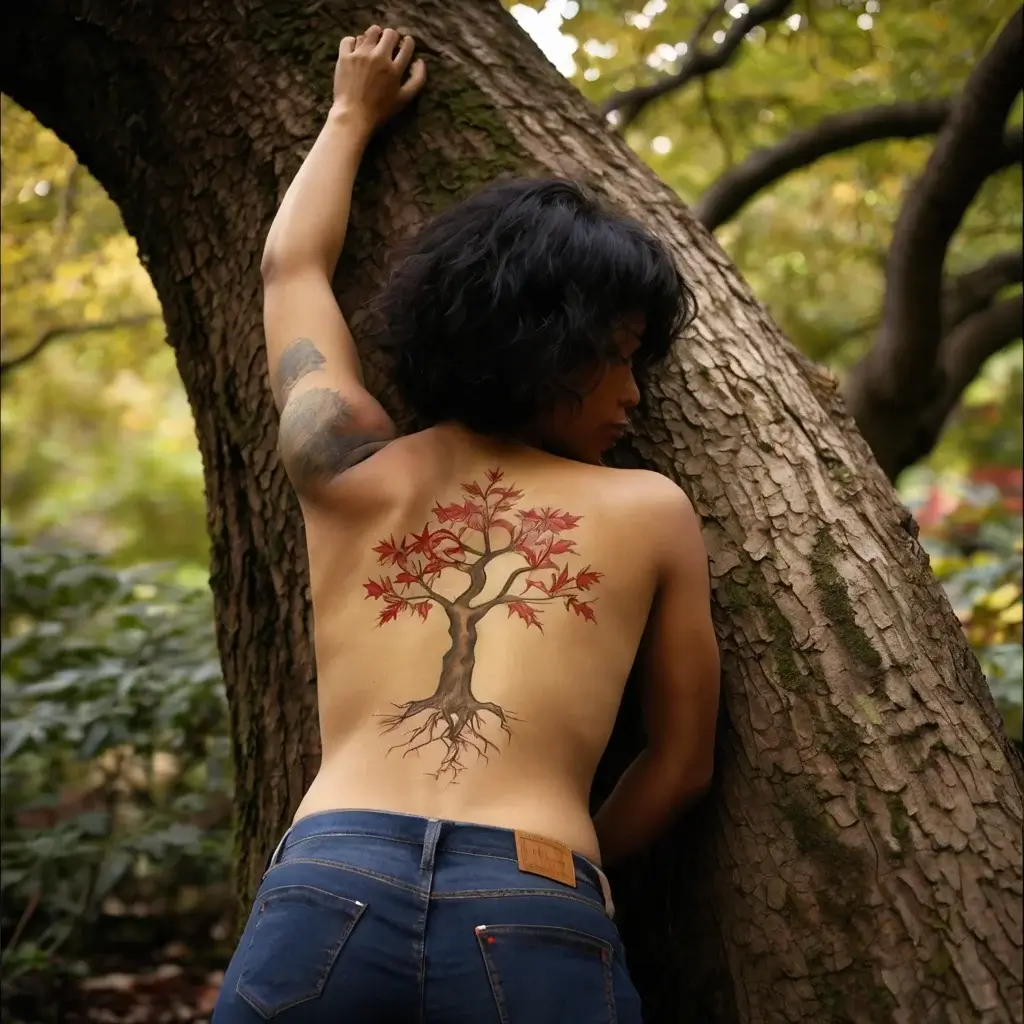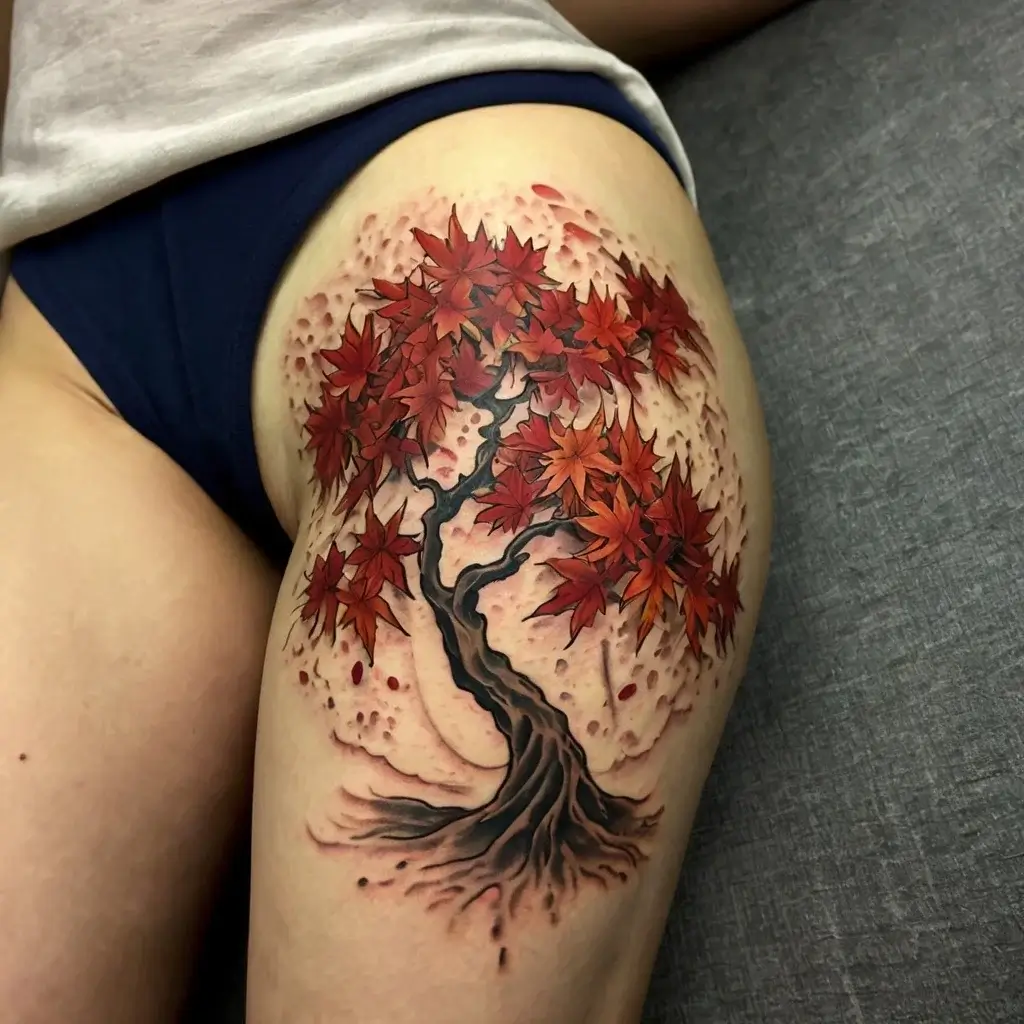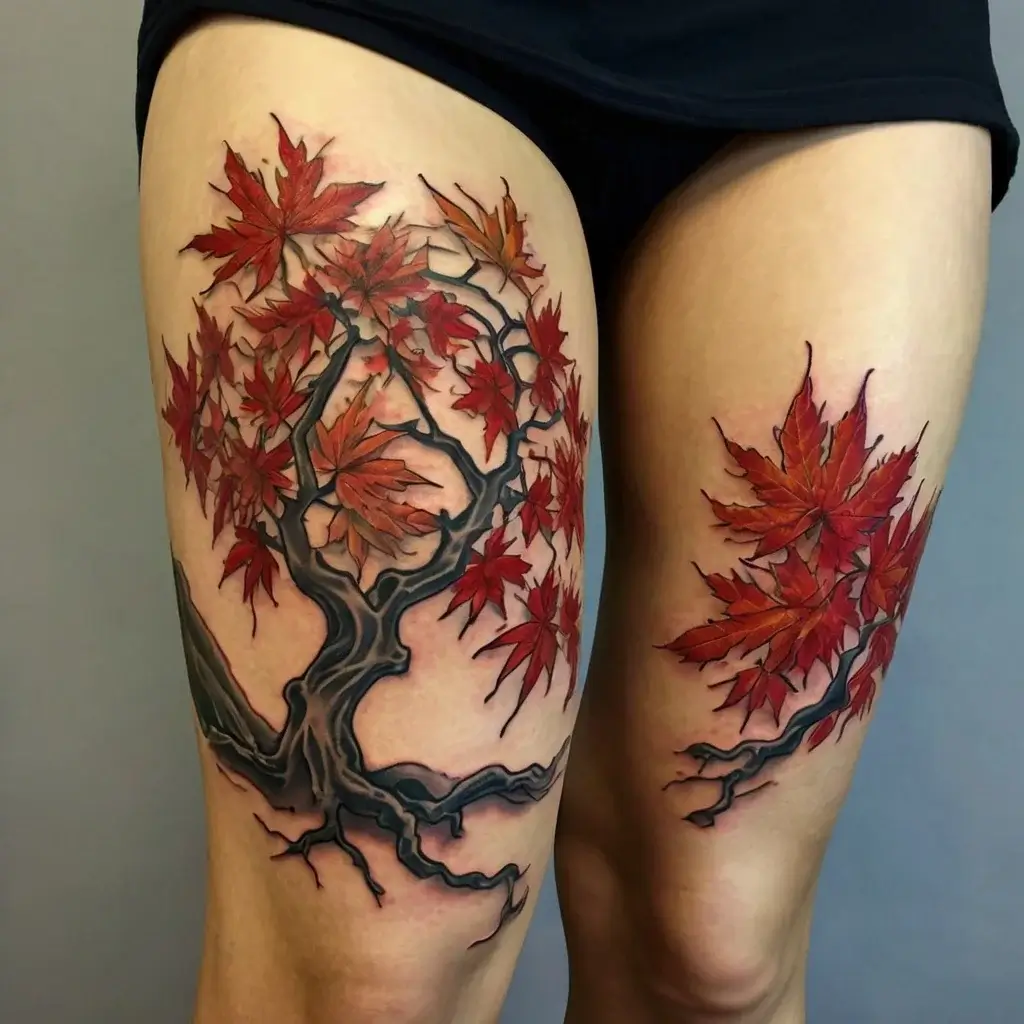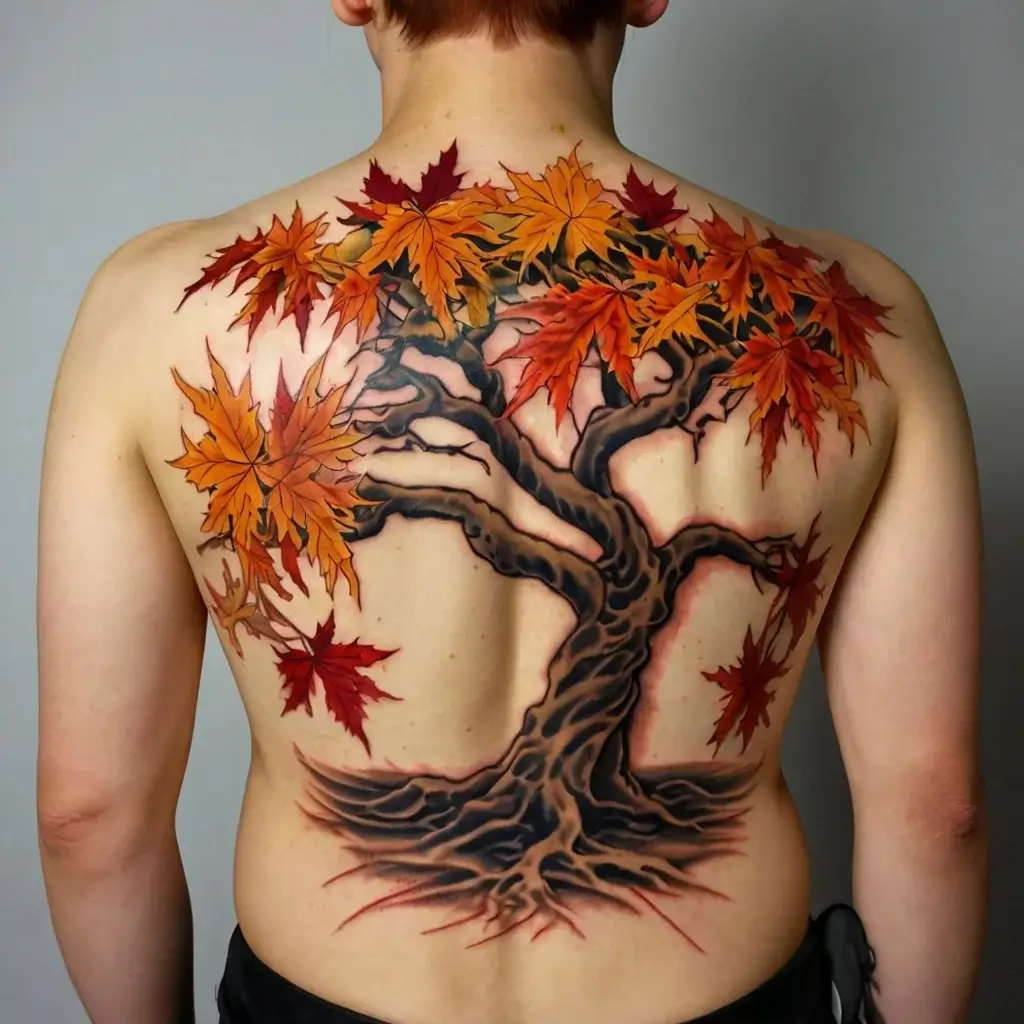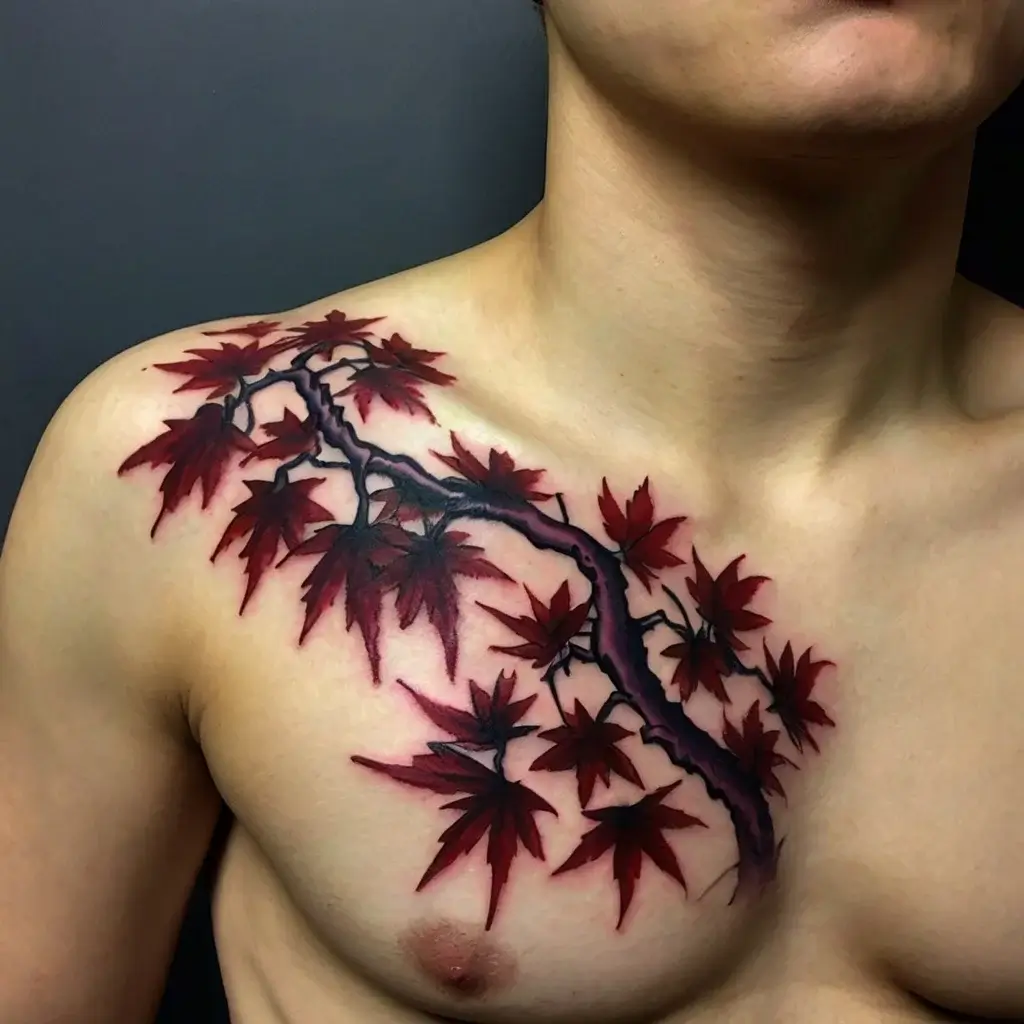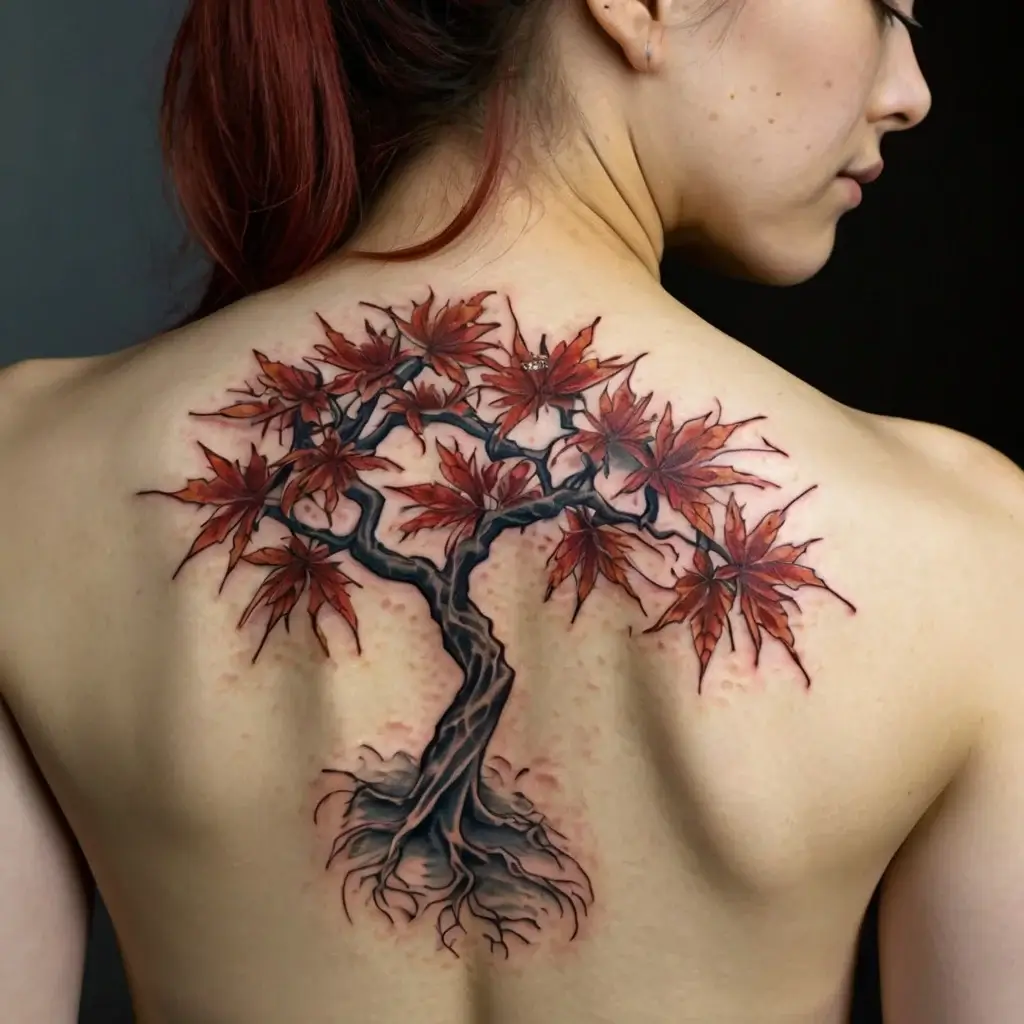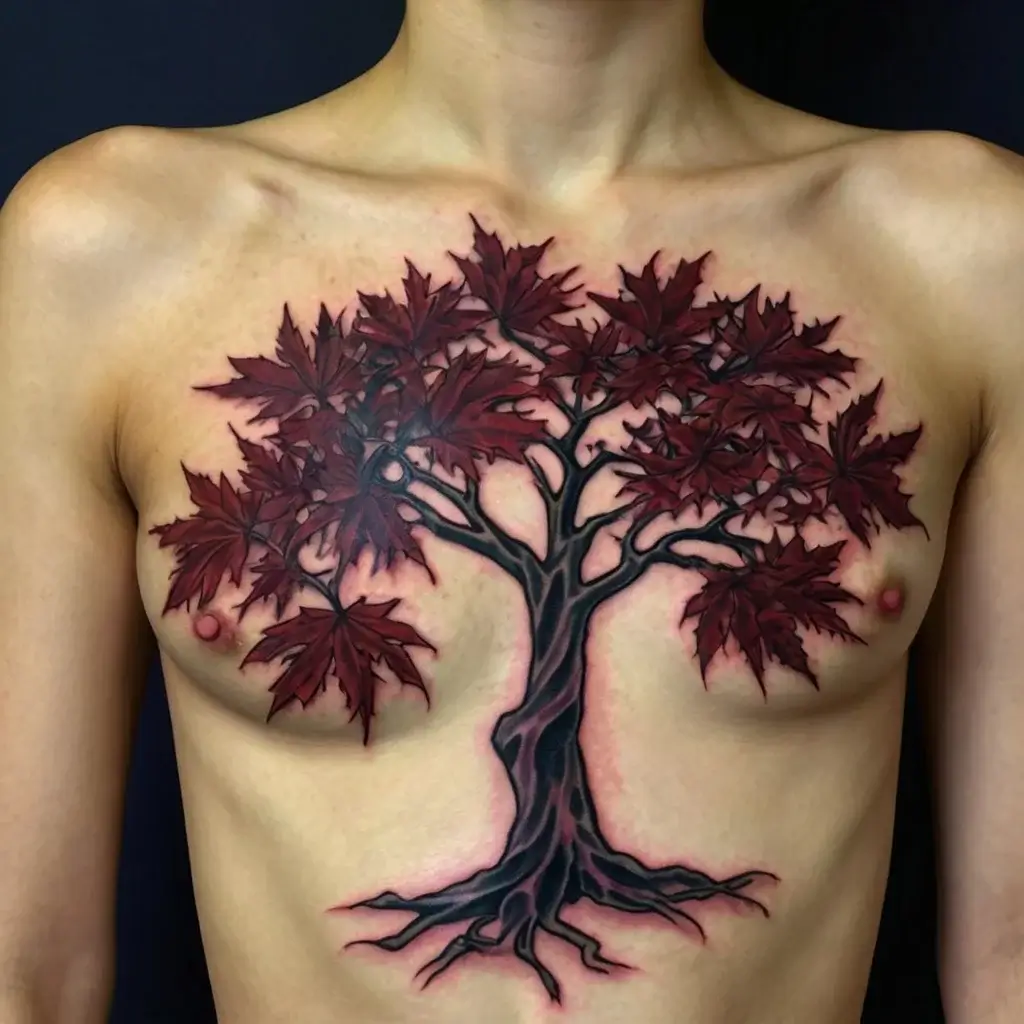Japanese maple tattoos aren’t just about their beauty. These tattoos often tell a deeper story, one tied to themes like change, growth, and the cycles of life. In Japan, the maple leaf stands for both the passing of time and the grace found in each moment. Its vivid colors and sharp lines make it a strong choice for those looking to reflect on personal transformation. In this post, we’ll dive into the meanings behind these tattoos and showcase 72 design ideas that can help you find the perfect one for yourself.
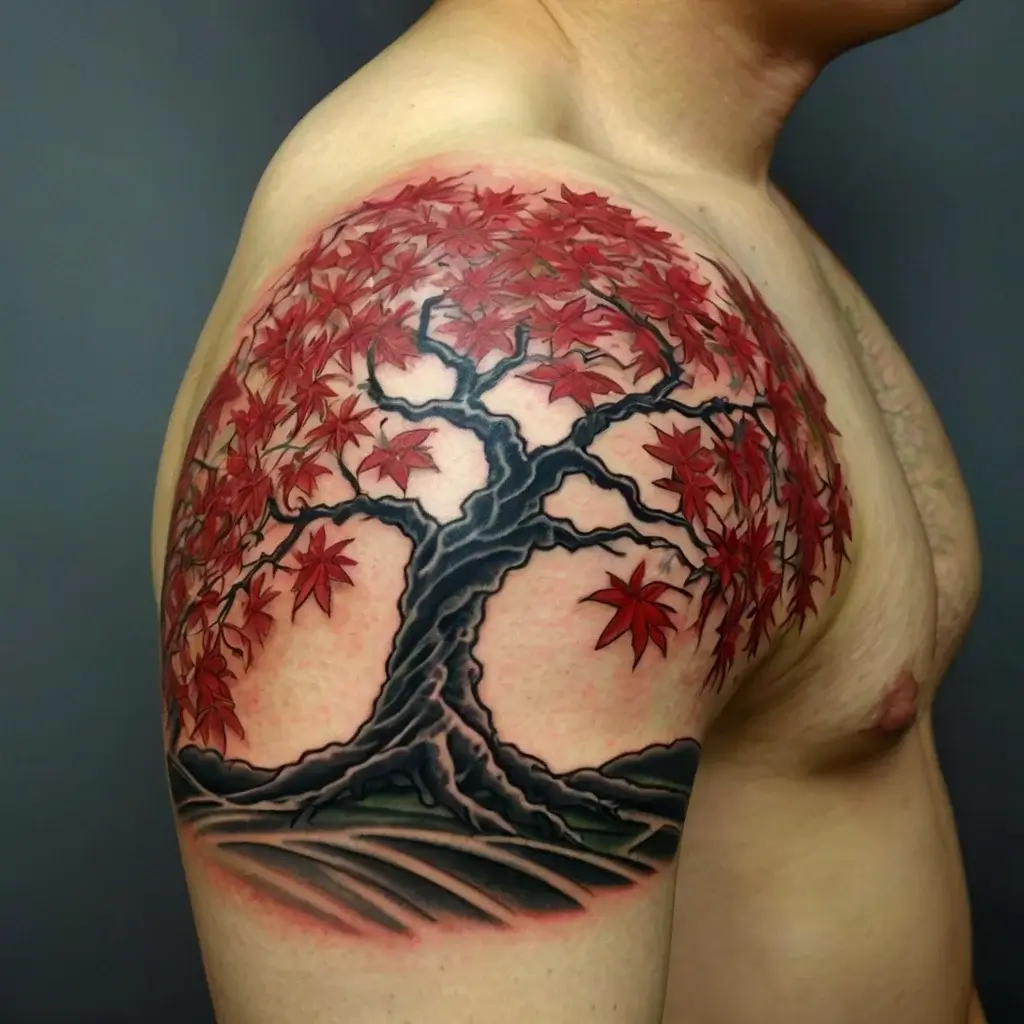
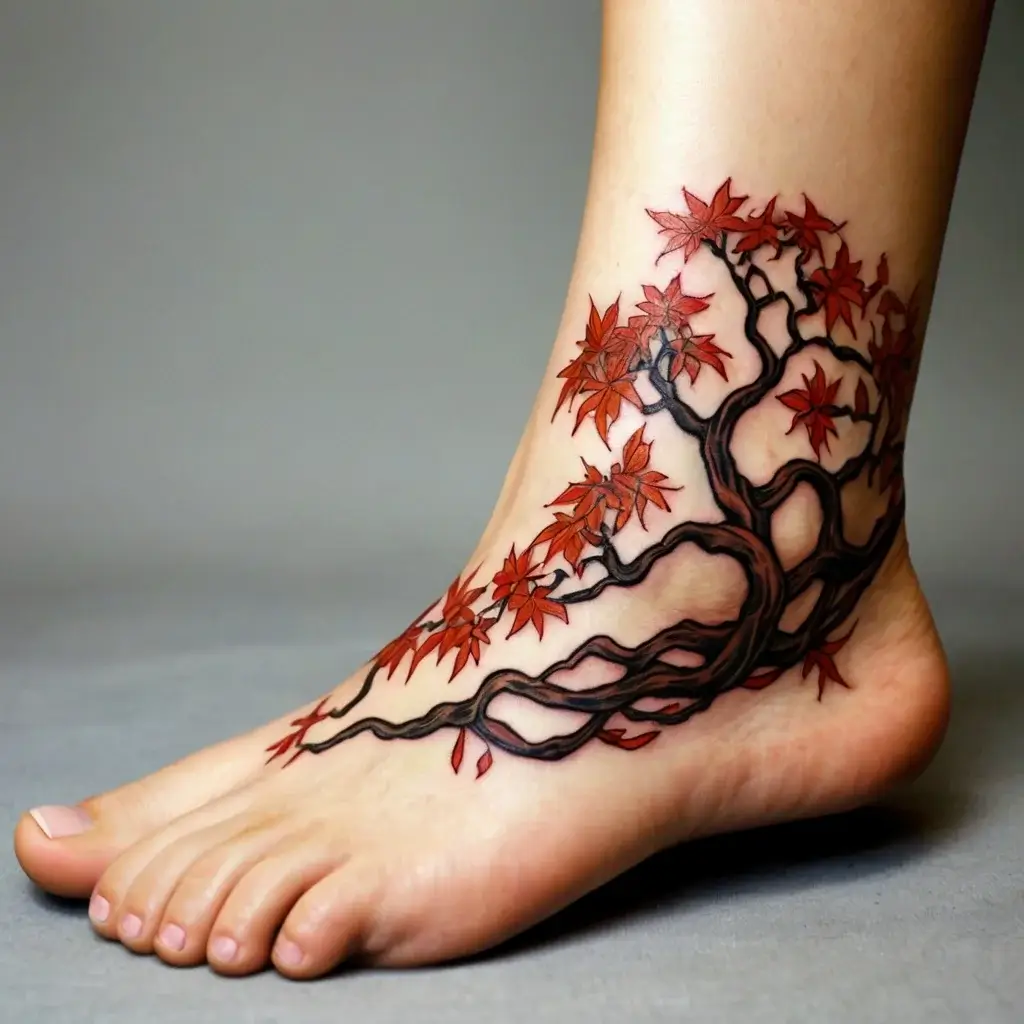
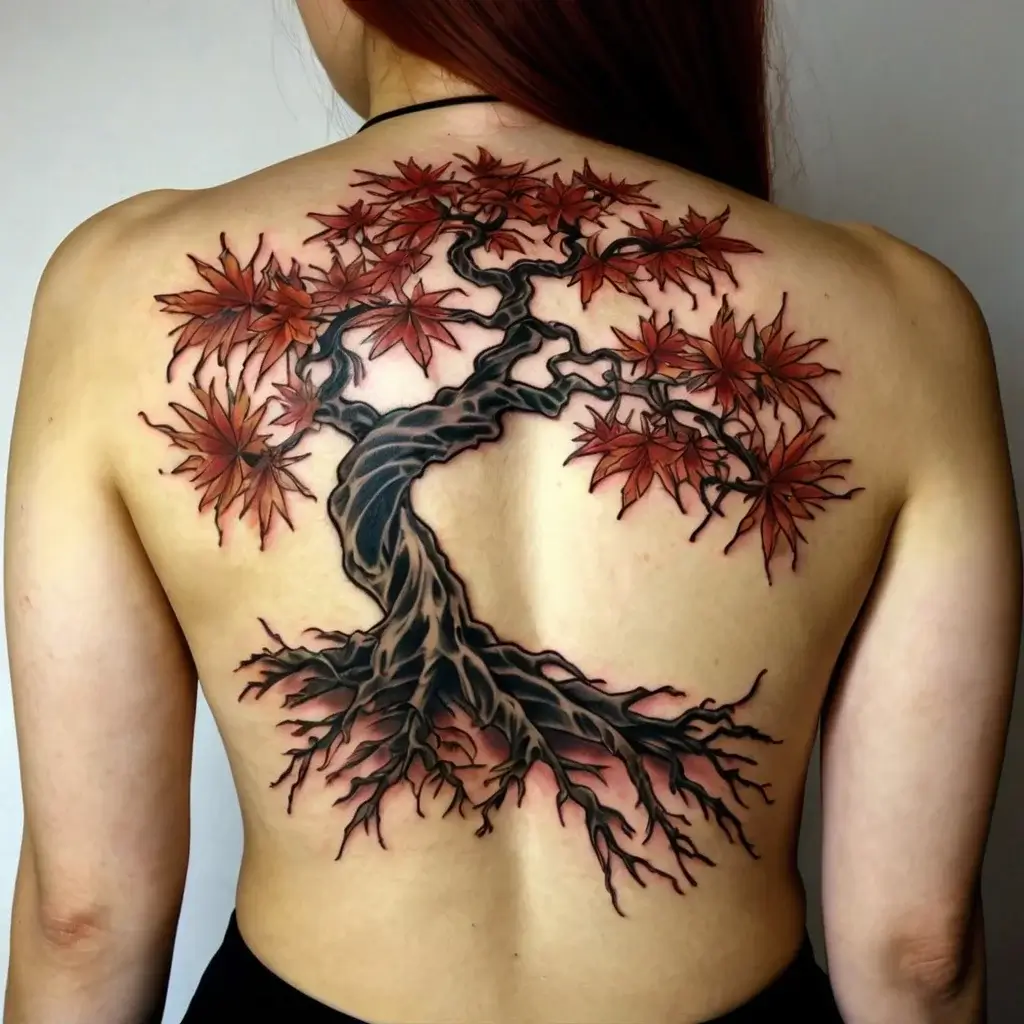
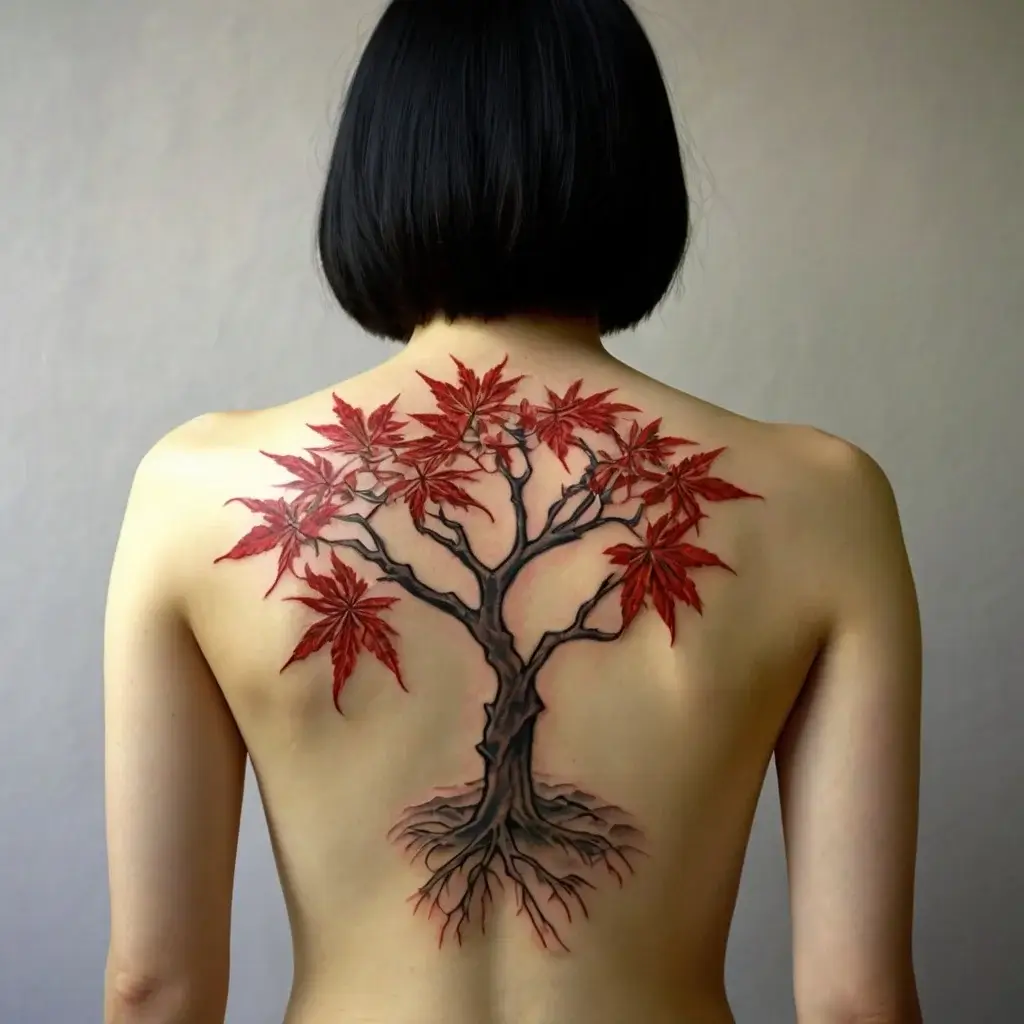

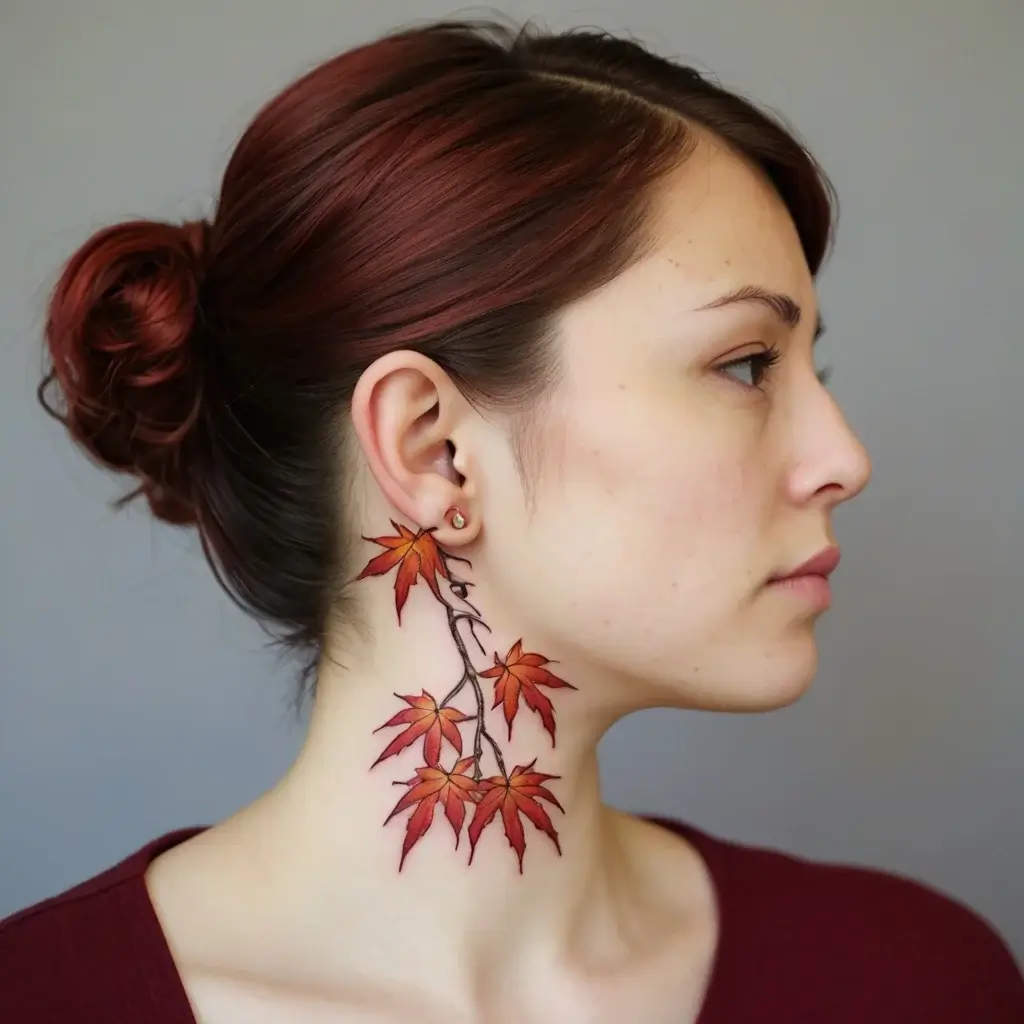
The Meaning Behind Japanese Maple Tattoos
The symbolism of the Japanese Maple Leaf
The Japanese maple leaf is more than just a pretty part of nature. In tattoo art, it holds deep meanings that resonate with many. This leaf, in vibrant reds or soft oranges, symbolizes life’s cycle. It represents growth and eventual fading, like the changing seasons.
Embracing Change and Transformation
A key message behind the Japanese maple leaf is change. Just as the leaves shift colors in autumn, it speaks to personal transformation. People often get this tattoo to mark a significant turning point in their lives. It’s a reminder that change, while sometimes difficult, is a natural and necessary part of the journey.
Beauty and Elegance
The delicate structure of the Japanese maple leaf is a symbol of beauty in simplicity. It represents elegance, not through grand gestures but in the quiet, understated moments. This tattoo can be a reflection of someone who finds strength in grace and appreciates the finer details of life.
Balance and Harmony in Life
Japanese culture places great emphasis on balance, and the Japanese maple leaf is often seen as a reflection of this philosophy. With its symmetrical structure, the leaf stands as a symbol of harmony. Those who choose this tattoo may seek balance in their own lives, striving to align their mind, body, and spirit.
Japanese Maple Tattoos and Personal Growth
For many, the Japanese maple tattoo is closely tied to personal growth. As the tree’s leaves transform throughout the seasons, they serve as a reminder of one’s journey toward self-improvement. This tattoo often symbolizes maturity, a willingness to adapt, and the resilience to grow despite challenges.
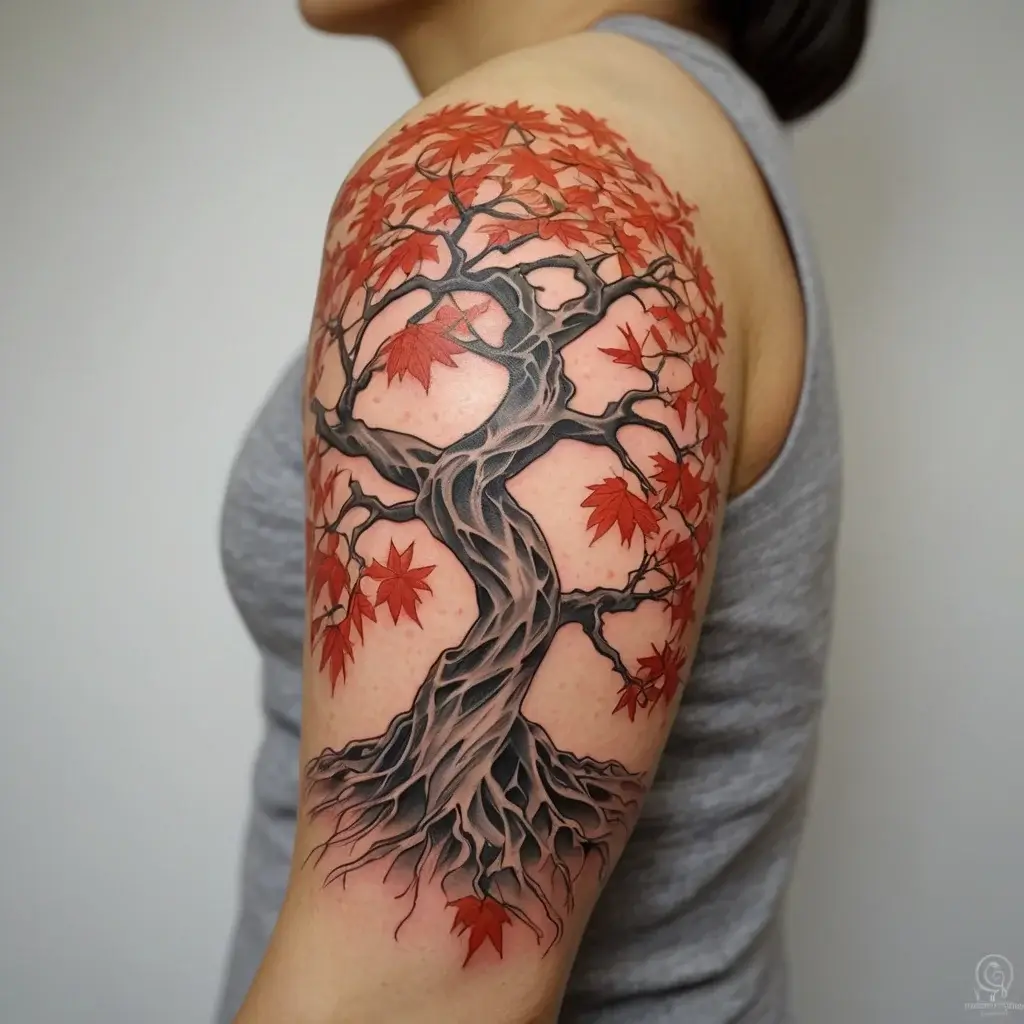
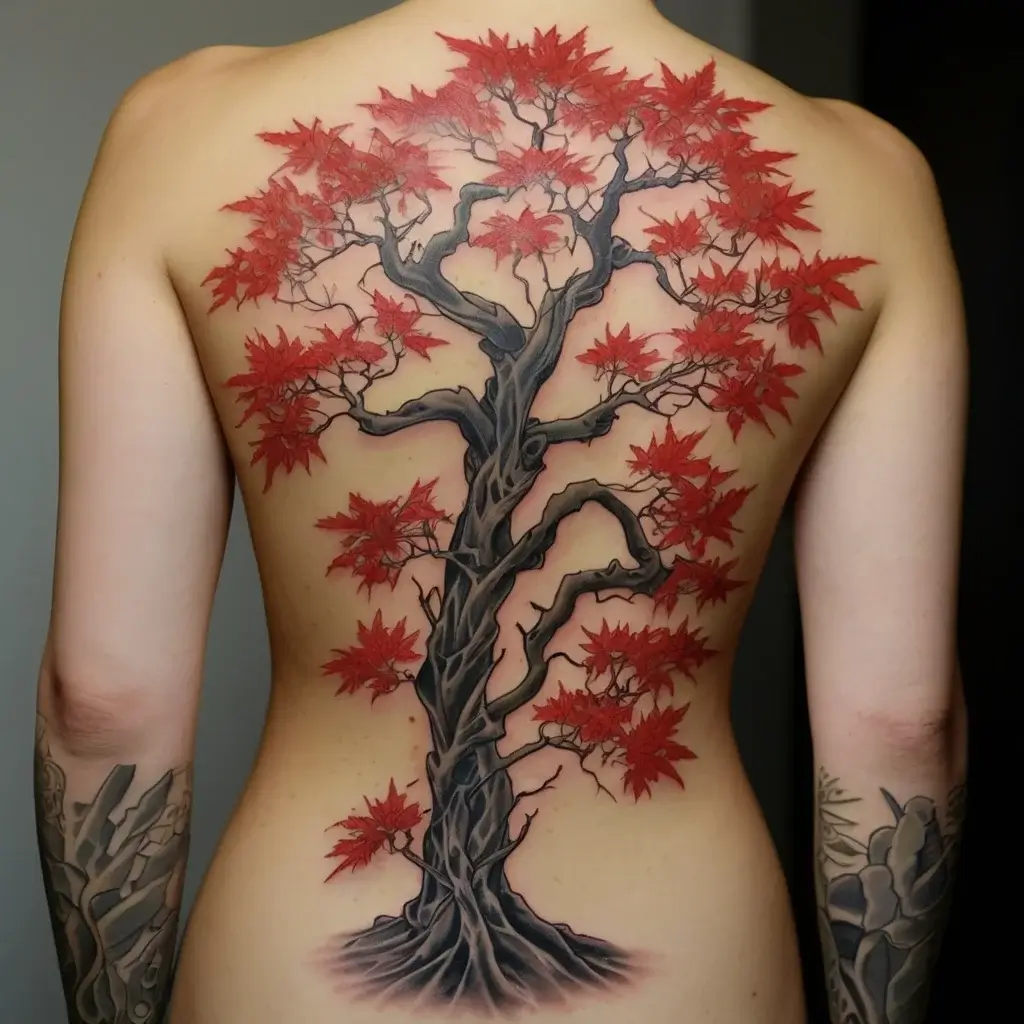
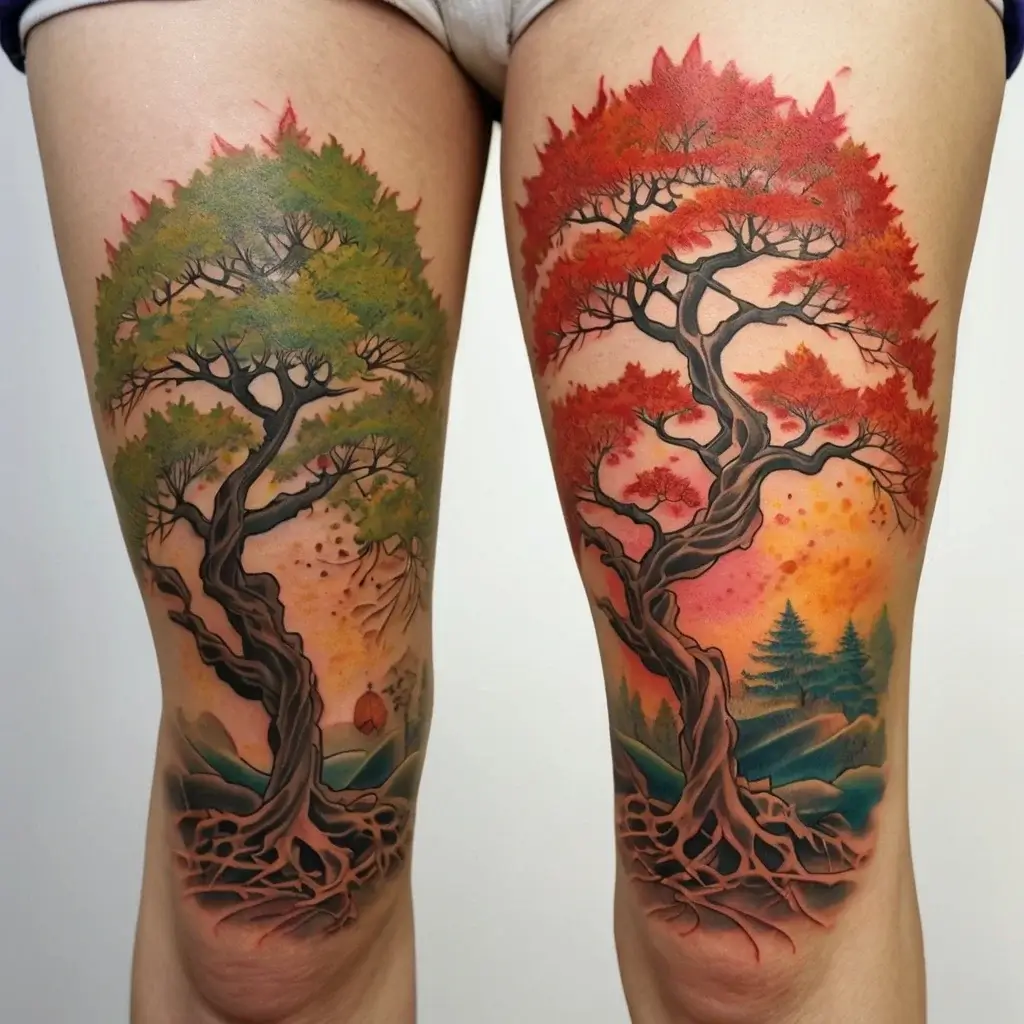

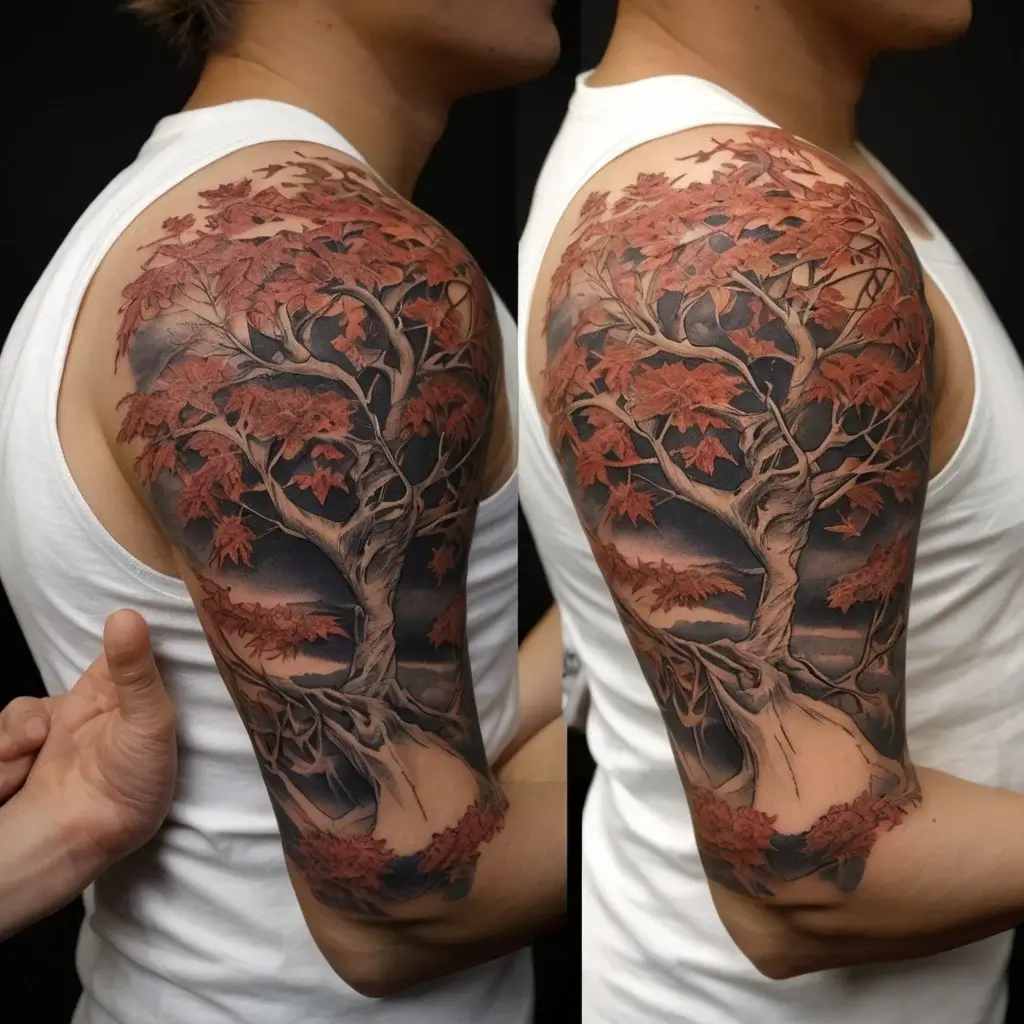
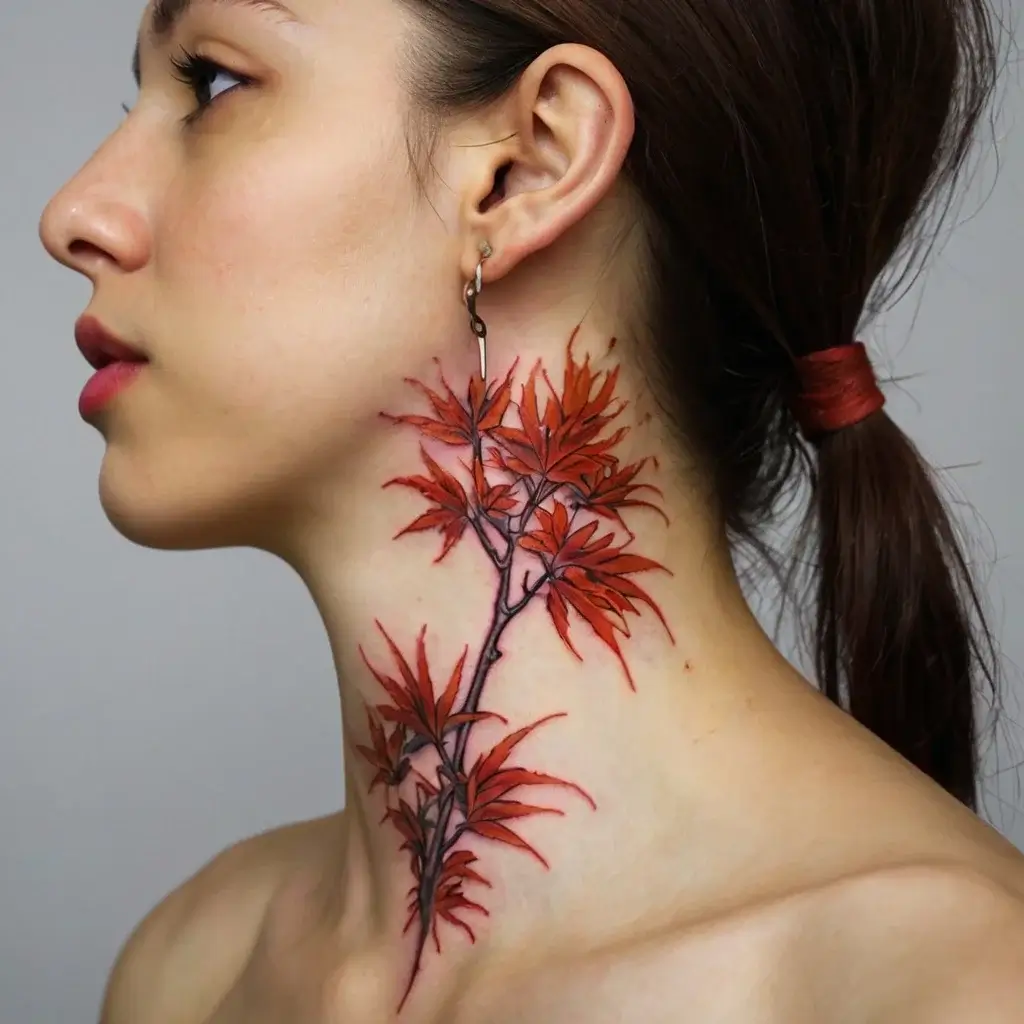
The Symbolism of Japanese Maple in Different Cultures
Japanese Culture and the Maple Tree
In Japan, the maple tree is a cherished symbol. It reflects the close bond between people and nature. The bright autumn maple leaves are central to many Japanese customs. They remind people of life’s cycles and the beauty of change.
Connection to Nature and Seasons
Japanese culture places high value on the changing seasons. The Japanese maple, or “Momiji,” is a perfect example of this appreciation. In autumn, when the leaves shift from green to shades of red and orange, it symbolizes the fleeting beauty of nature and the passage of time. It encourages reflection and acceptance of life’s inevitable changes.
Importance in Traditional Art
The Japanese maple has a long-standing presence in traditional Japanese art. From woodblock prints to poetry, this tree has inspired countless works over the centuries. Its delicate leaves, often featured in artworks, represent grace, refinement, and the fleeting beauty of life.
Japanese Maple Symbolism in Western Culture
While the Japanese maple holds deep cultural roots in the East, its beauty and symbolism have also made their way into Western culture. In the West, the Japanese maple often represents serenity and peace. Its striking look and calming qualities make it popular in gardens and tattoos.
Maple Tree Symbolism in Other Asian Cultures
The Japanese maple isn’t limited to Japan when it comes to symbolism. In other parts of Asia, particularly China and Korea, the maple tree is also admired. It often symbolizes balance, peace, and prosperity. Despite differing views, the maple tree symbolizes nature and harmony. This idea resonates across cultures.
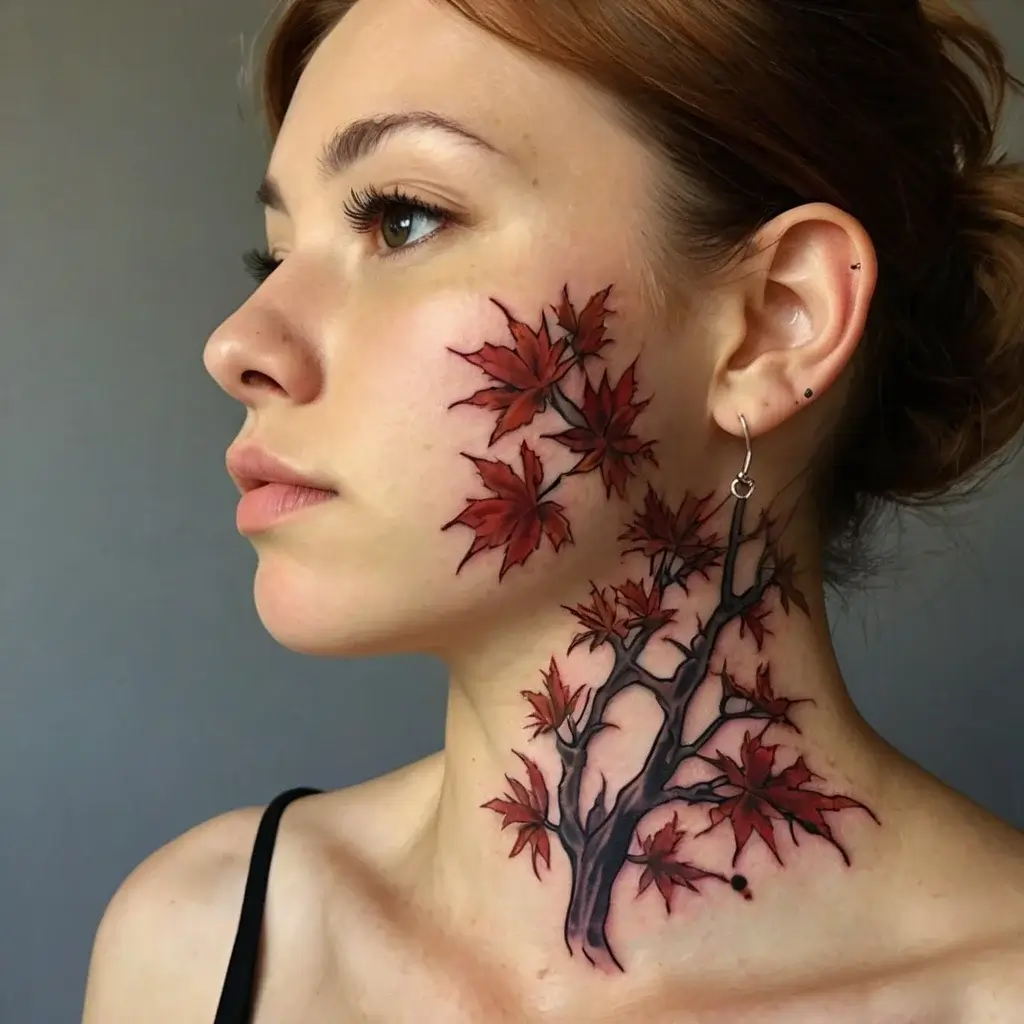
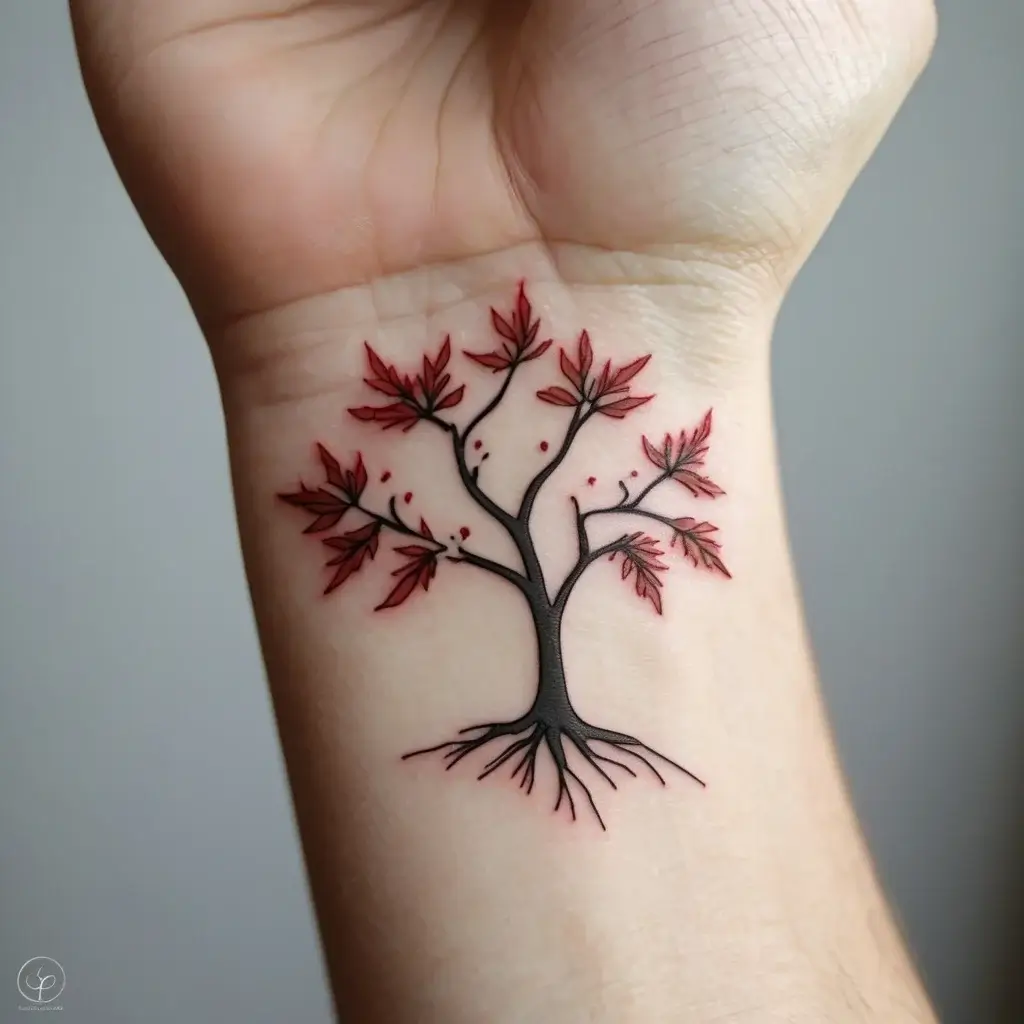
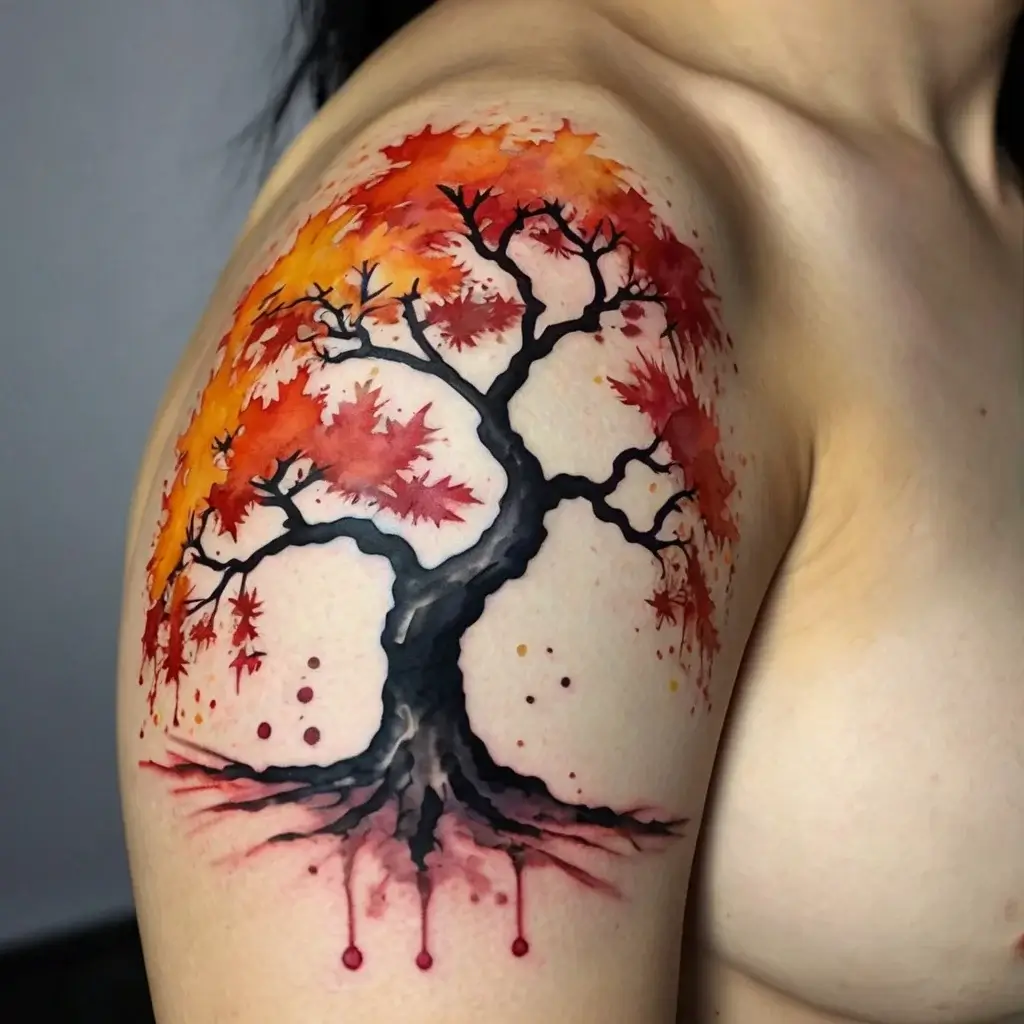
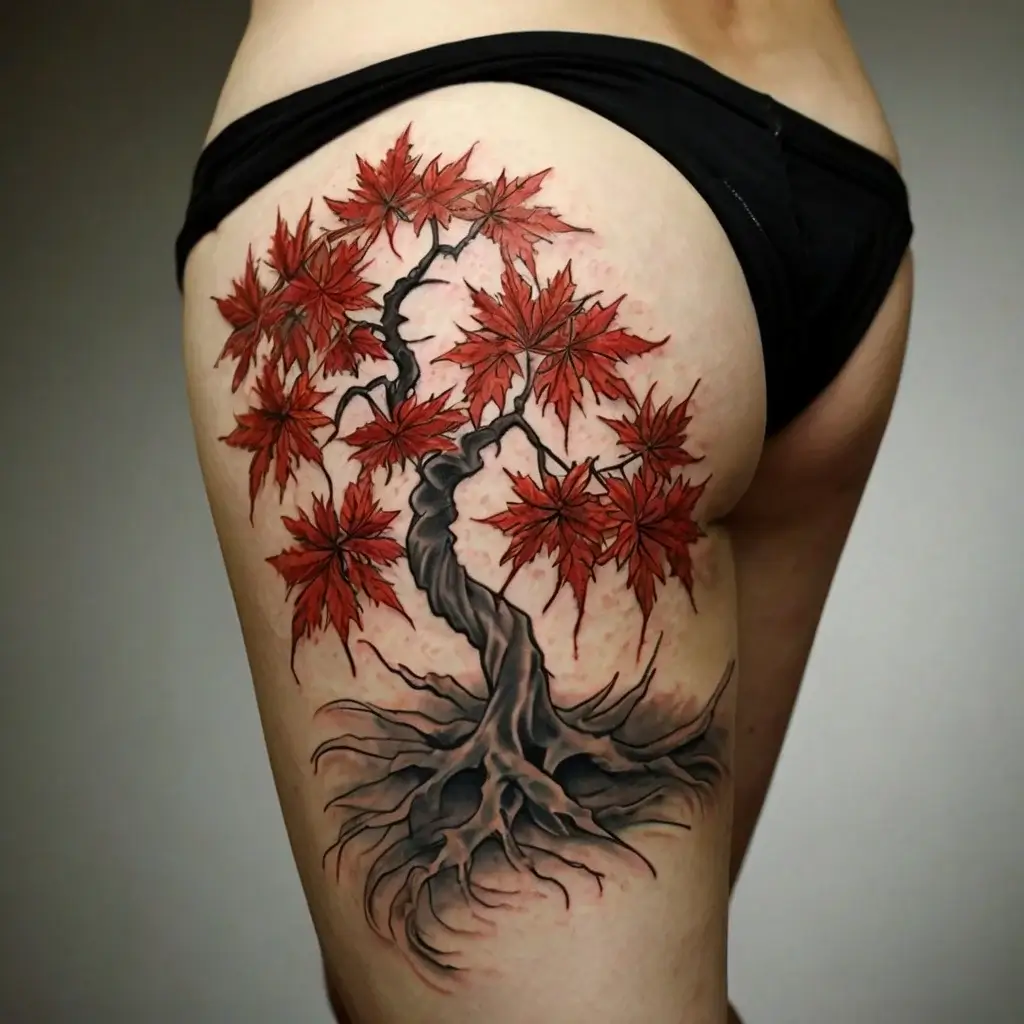
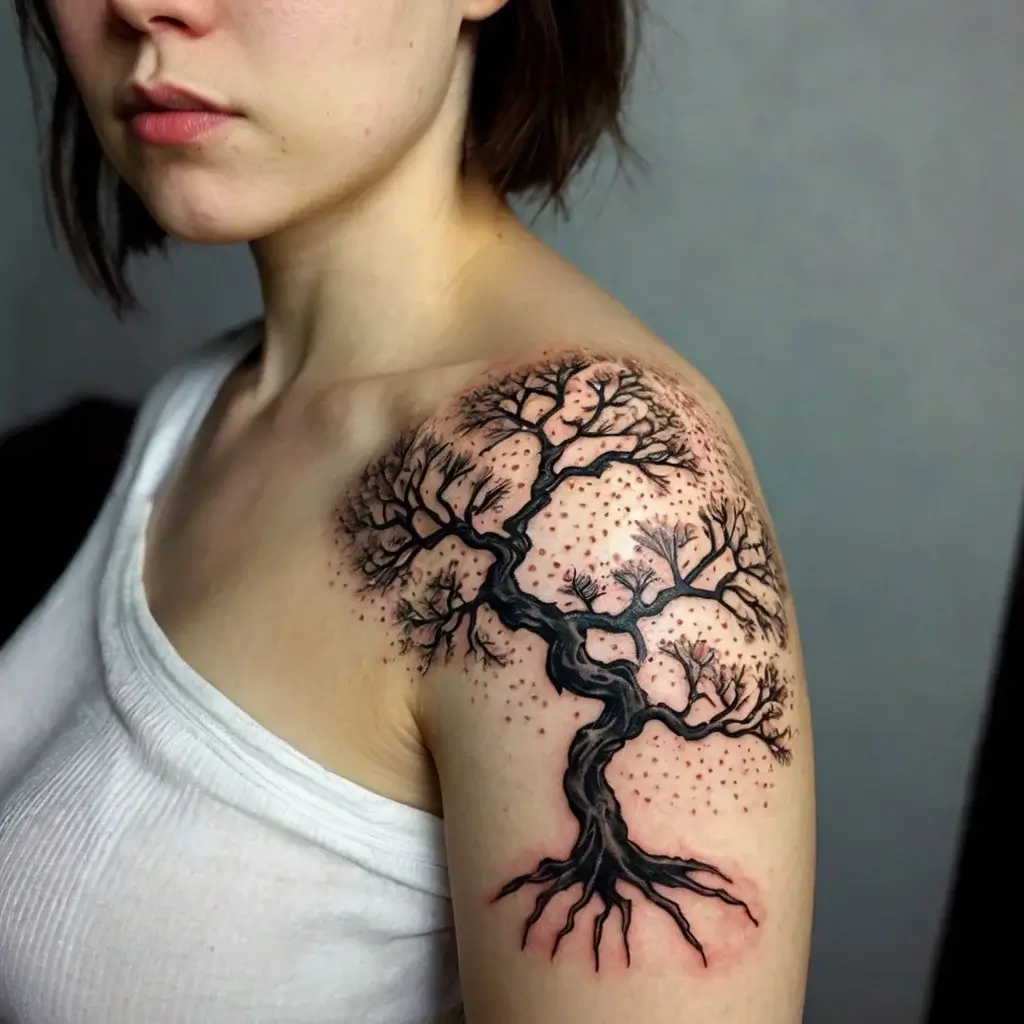

The Aesthetic Appeal of Japanese Maple Tattoos
Why the Japanese Maple Leaf Is a Beautiful Tattoo Choice?
The Japanese maple leaf is naturally striking and makes for a beautiful tattoo. Its unique shape, with sharp points and soft edges, creates a look that’s both bold and delicate. The colors of the leaf—rich reds, oranges, and yellows—bring a sense of warmth and life to any design. Whether you want something small and simple or part of a larger piece, the Japanese maple leaf adds elegance to the skin. It’s a perfect choice for someone who wants their tattoo to be both meaningful and eye-catching.
Japanese Maple in Realistic vs. Abstract Tattoo Styles
Japanese maple tattoos can be done in many styles. Some prefer a realistic approach, where the artist focuses on fine details like the veins and shading of the leaf. These tattoos look almost lifelike, with colors that pop and bring the leaf to life. Others go for a more abstract style, where the design is simplified or made into something bold and modern. Abstract tattoos might use sharp lines, geometric shapes, or a minimalist approach to capture the essence of the leaf. Whether realistic or abstract, both styles allow for creativity and beauty.
Japanese Maple Tattoos and Spiritual Significance
Japanese Maple in Zen Buddhism
In Zen Buddhism, nature plays a key role in finding inner peace, and the Japanese maple is often seen as a symbol of mindfulness and reflection. The tree’s seasonal changes remind us of the impermanence of life and the importance of living in the present moment. A tattoo of a Japanese maple can represent this spiritual journey, symbolizing acceptance of change and the search for balance. It’s a way to carry a piece of Zen philosophy with you, a reminder to stay grounded and mindful.

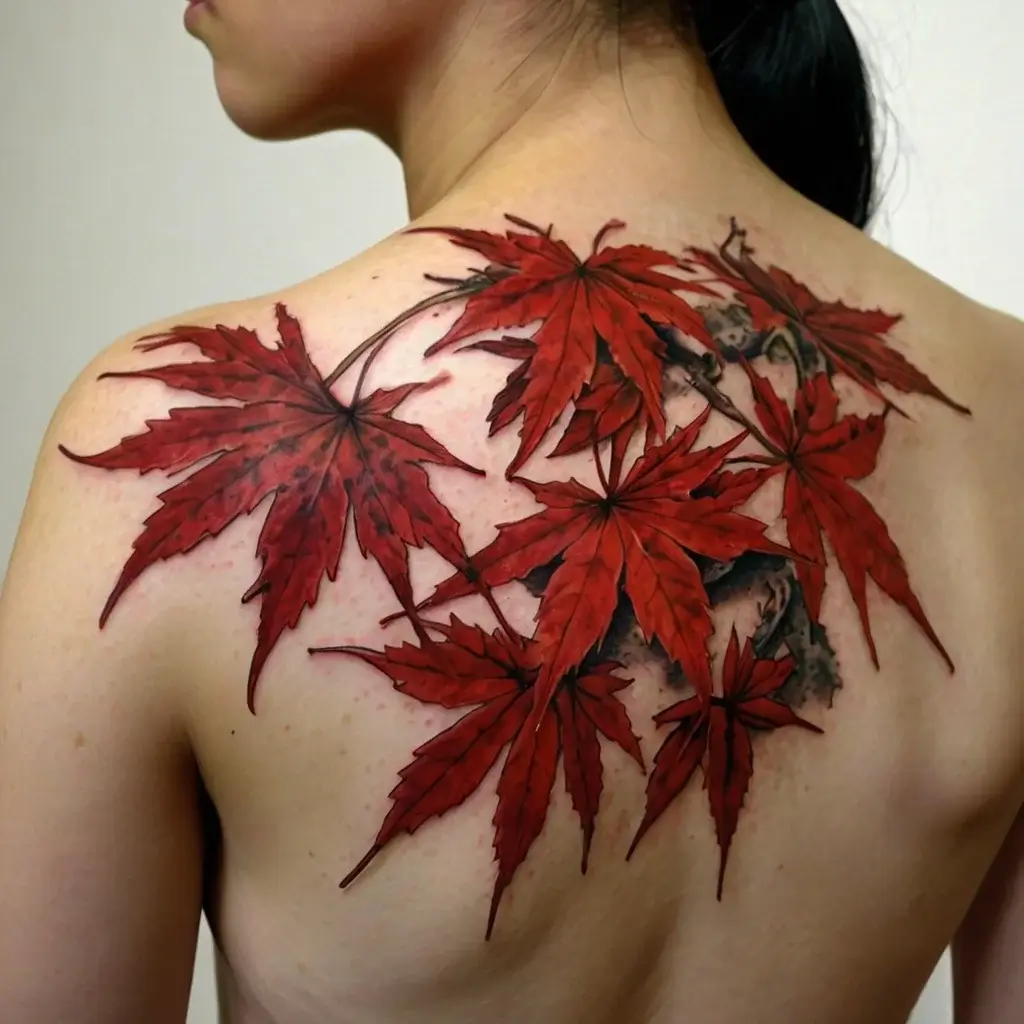
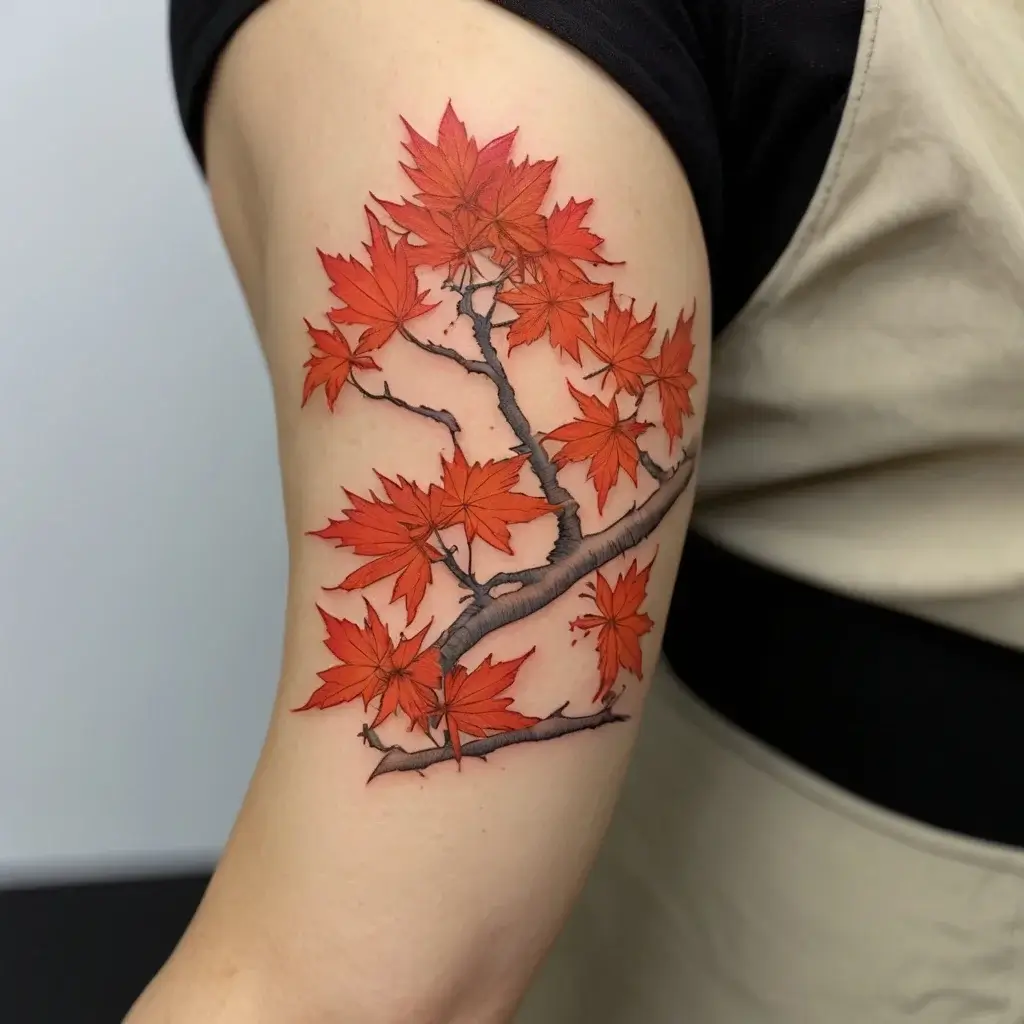
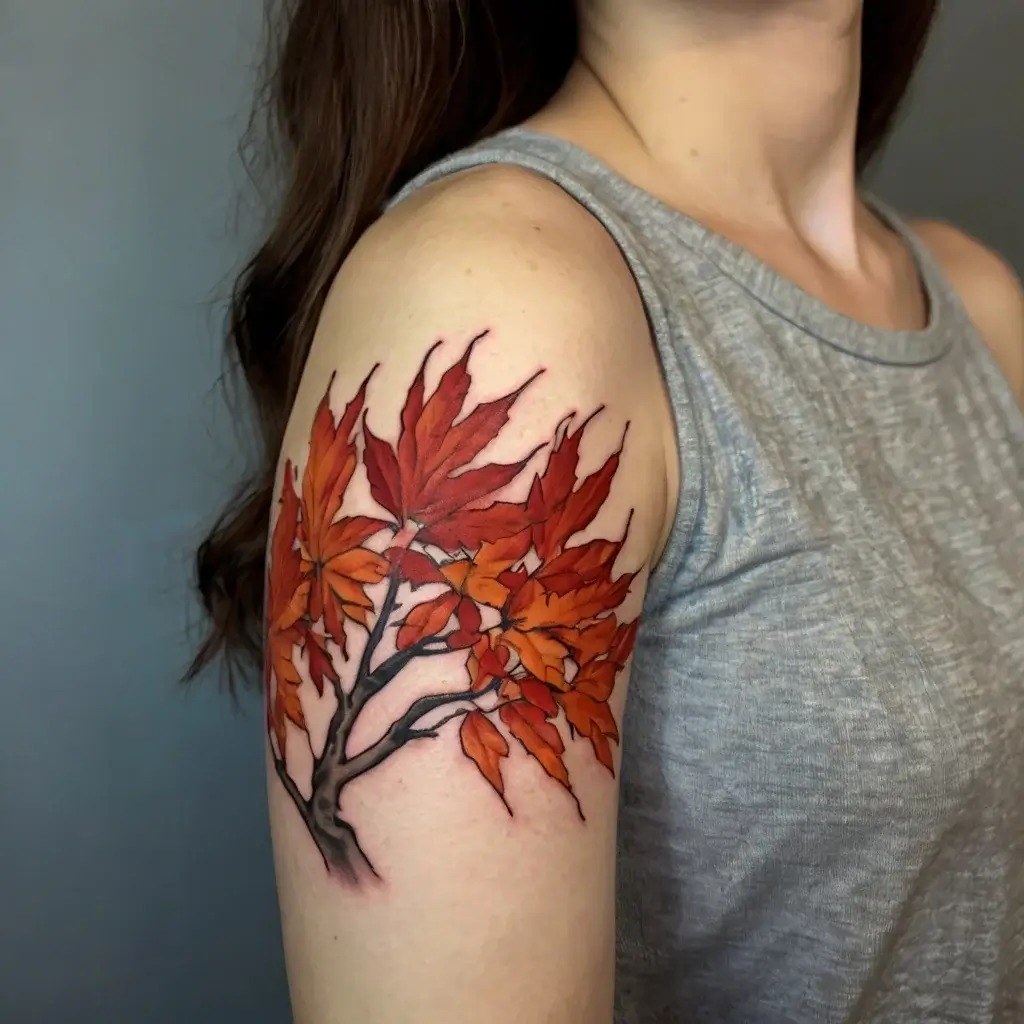
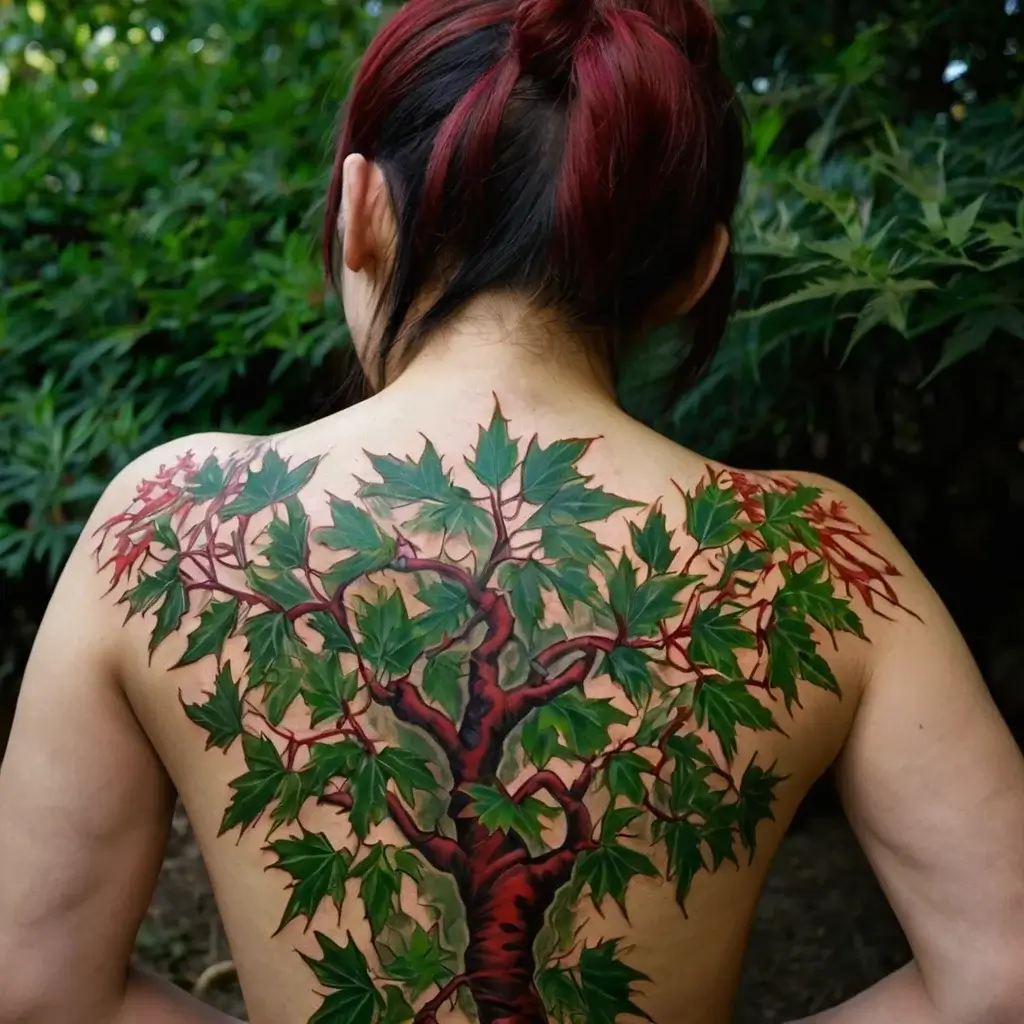
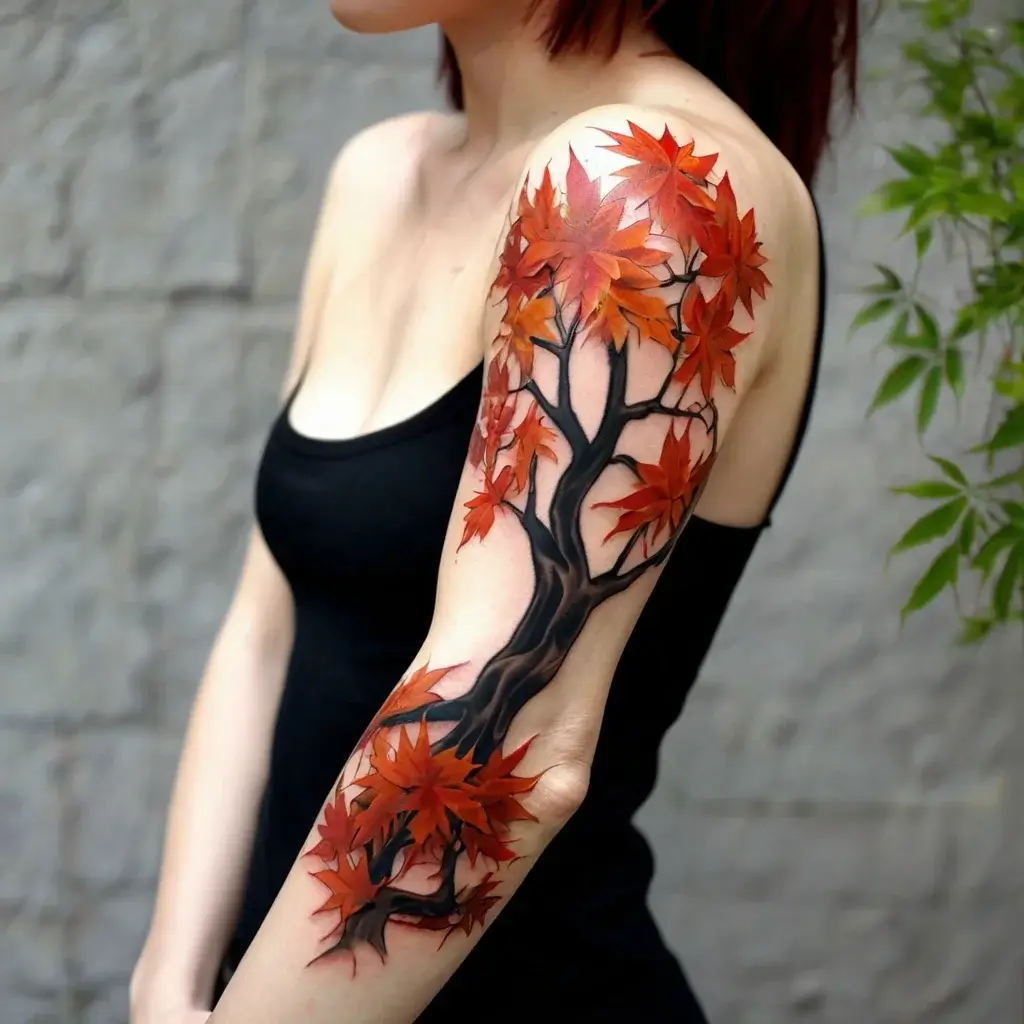
Tattoo is a Symbol of Inner Peace and Calmness
Many people choose a Japanese maple tattoo to represent inner peace and calm. The gentle flow of the leaf’s shape and its soft, warm colors create a sense of tranquility. Inking this symbol on the body can serve as a personal reminder to stay centered, no matter how chaotic life gets. It’s not just about beauty; it’s a daily reminder of finding peace within yourself, even in the midst of change.
Color Choices and Their Meanings in Japanese Maple Tattoos
Red Japanese Maple Tattoo Meaning
Red is the most common color for Japanese maple leaves, especially in the fall. A red Japanese maple tattoo often stands for passion, strength, and energy. The deep red shade also reminds us that change is part of life, and nothing lasts forever. People who choose this color might be marking a big life shift or celebrating how they’ve grown through tough times.
Green and Yellow Japanese Maple Leaf Tattoos
Green and yellow leaves bring a different feeling. Green often stands for growth and fresh starts. It’s a symbol of renewal, perfect for someone focused on personal growth or beginning a new chapter in life. Yellow, on the other hand, is all about joy, warmth, and optimism. A yellow maple leaf can be a reminder to find happiness in the everyday moments and stay positive.
You may also like Darth Vader Tattoos: Meaning, Significance (69 Designs)
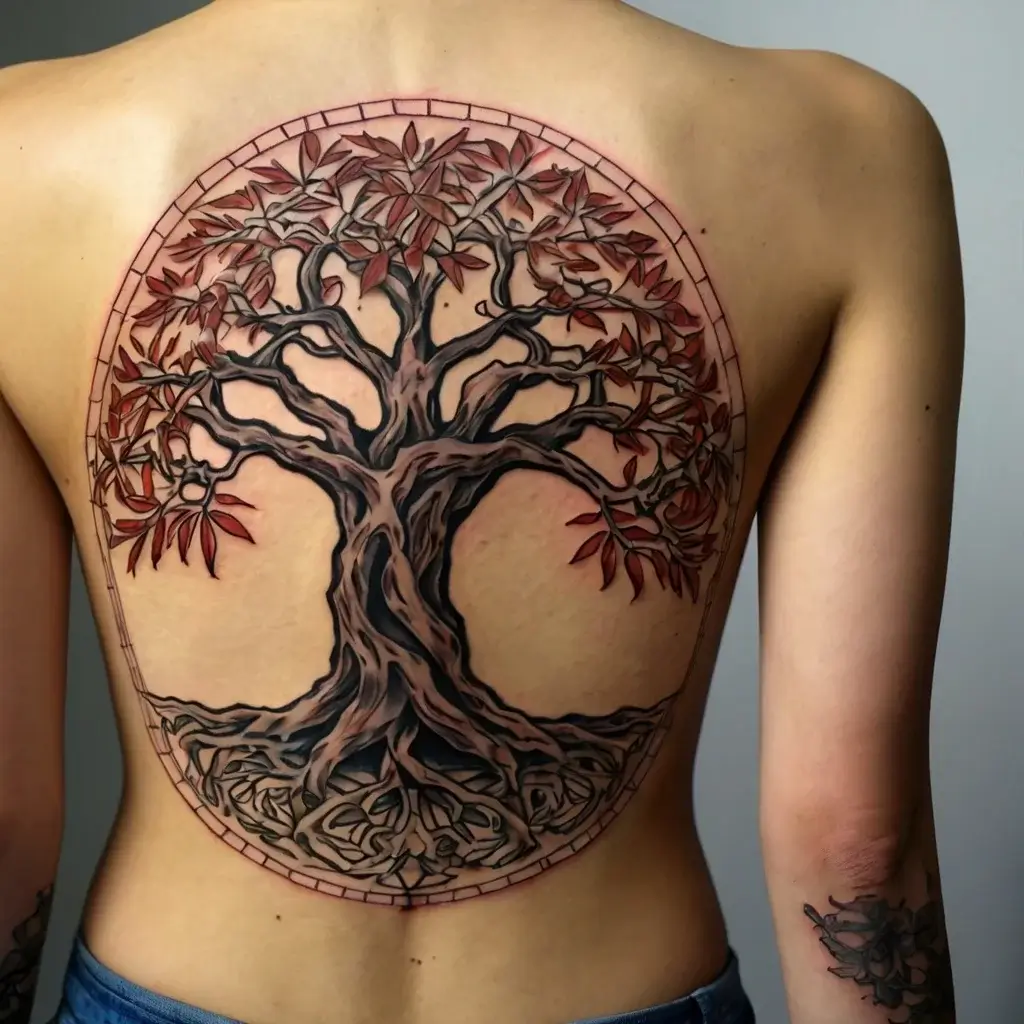
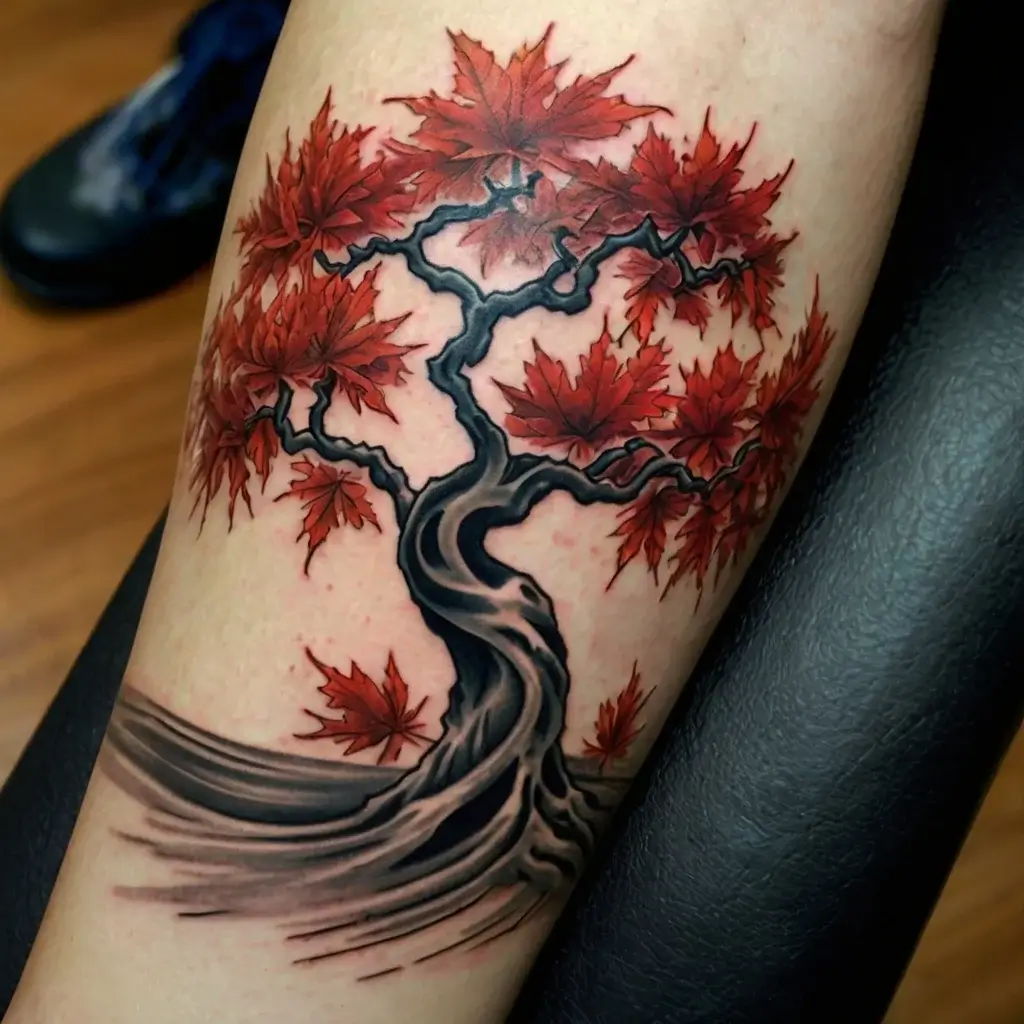
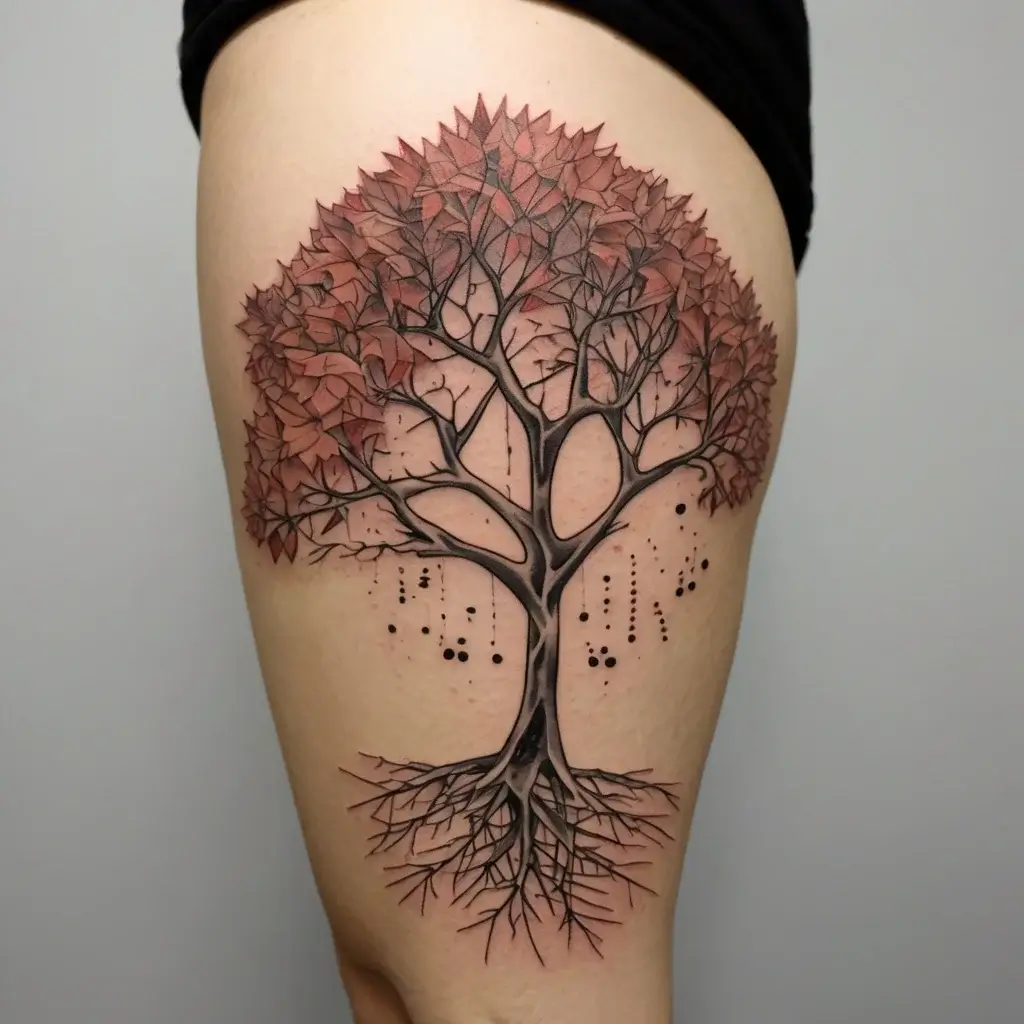
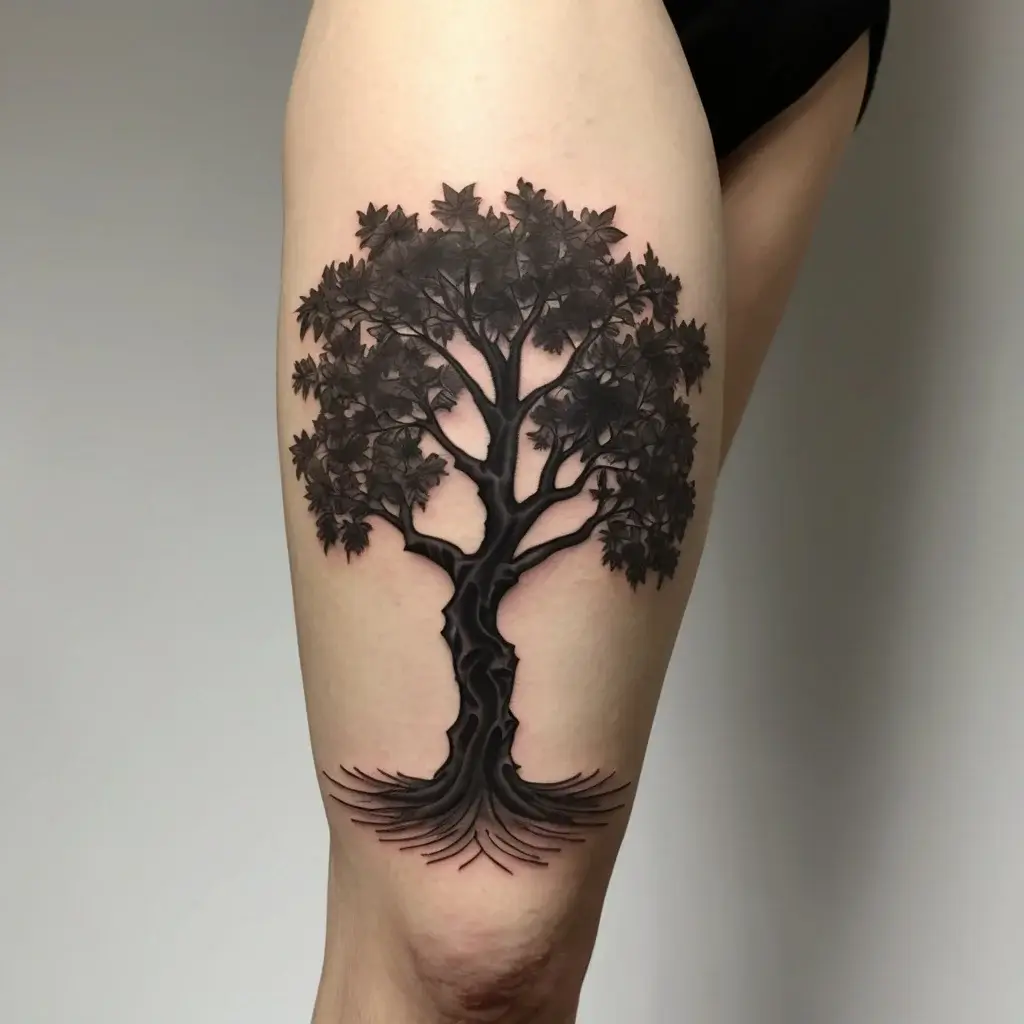
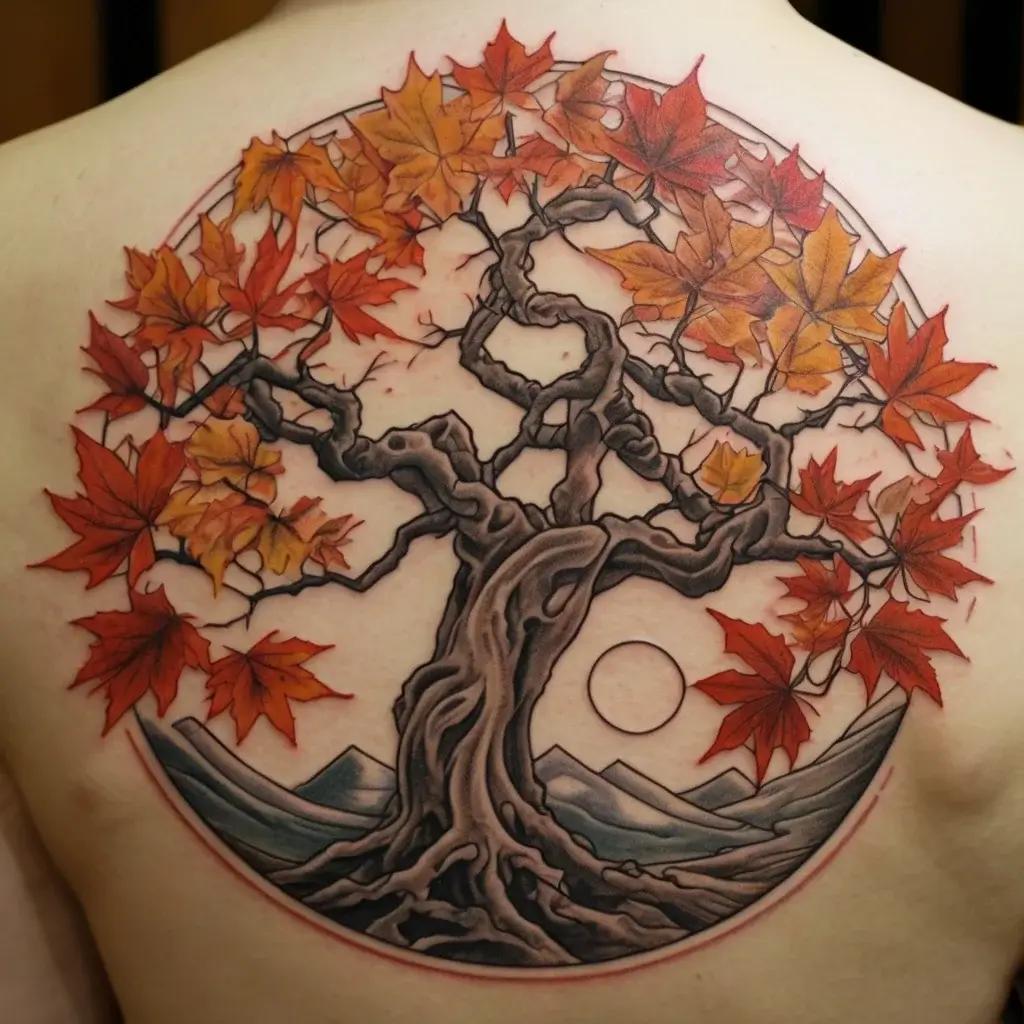
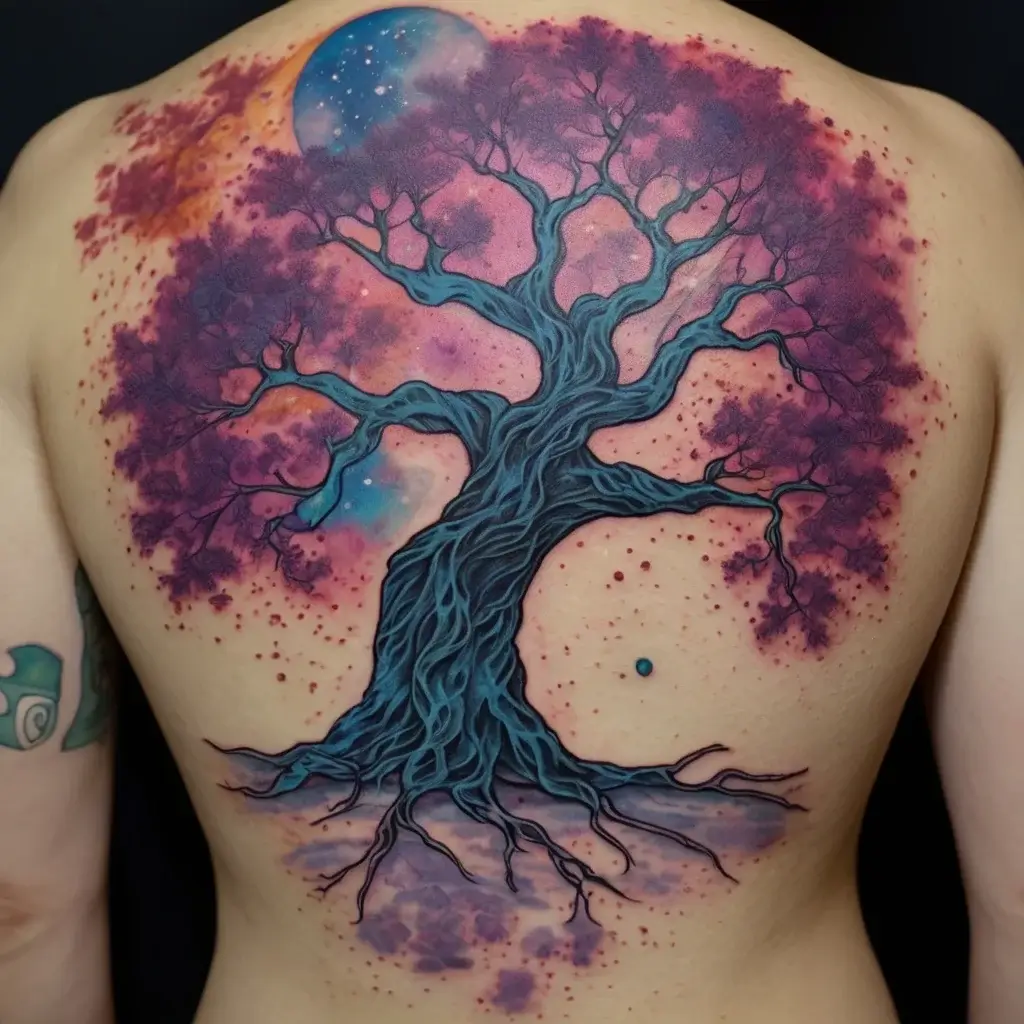
Seasonal Color Variations and Their Significance
The Japanese maple changes colors with the seasons, and some tattoos reflect that shift. People might choose to blend red, green, and yellow in their tattoos to show the full cycle of life—how things change but also how there’s beauty in each stage. This mix of colors can symbolize the passage of time and the importance of embracing change. It’s a great way to stay connected to the natural flow of life.
Japanese Maple Tattoos in Traditional Japanese Irezumi
The Role of Japanese Maple in Traditional Irezumi Art
In Irezumi, traditional Japanese tattoo art, nature is a key element. The Japanese maple leaf often appears in these designs, symbolizing change, beauty, and life’s fleeting nature. The leaf’s sharp lines and flowing shape fit well with other classic symbols like koi fish or dragons. The maple leaf often adds balance to the bold and powerful figures in these tattoos. Its presence reminds us that, like the seasons, life moves forward, and nothing stays the same forever.
Differences Between Modern Tattoos and Traditional Irezumi
Traditional Irezumi tattoos are usually large and cover a lot of skin. They’re done by hand, using special tools, which takes more time and effort. Modern tattoos are often smaller and done with machines. This allows for more precise details. Irezumi uses bold, sweeping designs that wrap around the body. Modern tattoos may use the Japanese maple in more subtle ways. Though the techniques and styles differ, both forms use the maple leaf to convey strong messages about life and change.
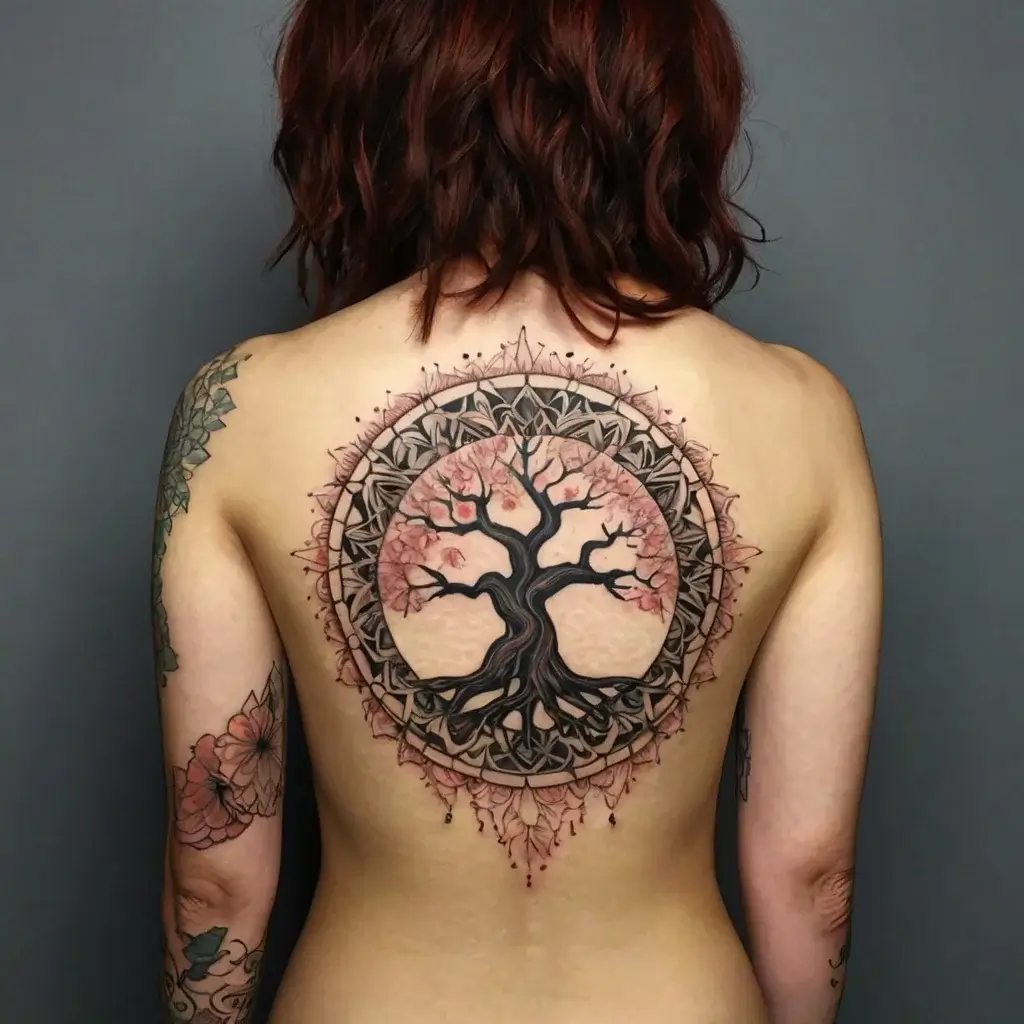
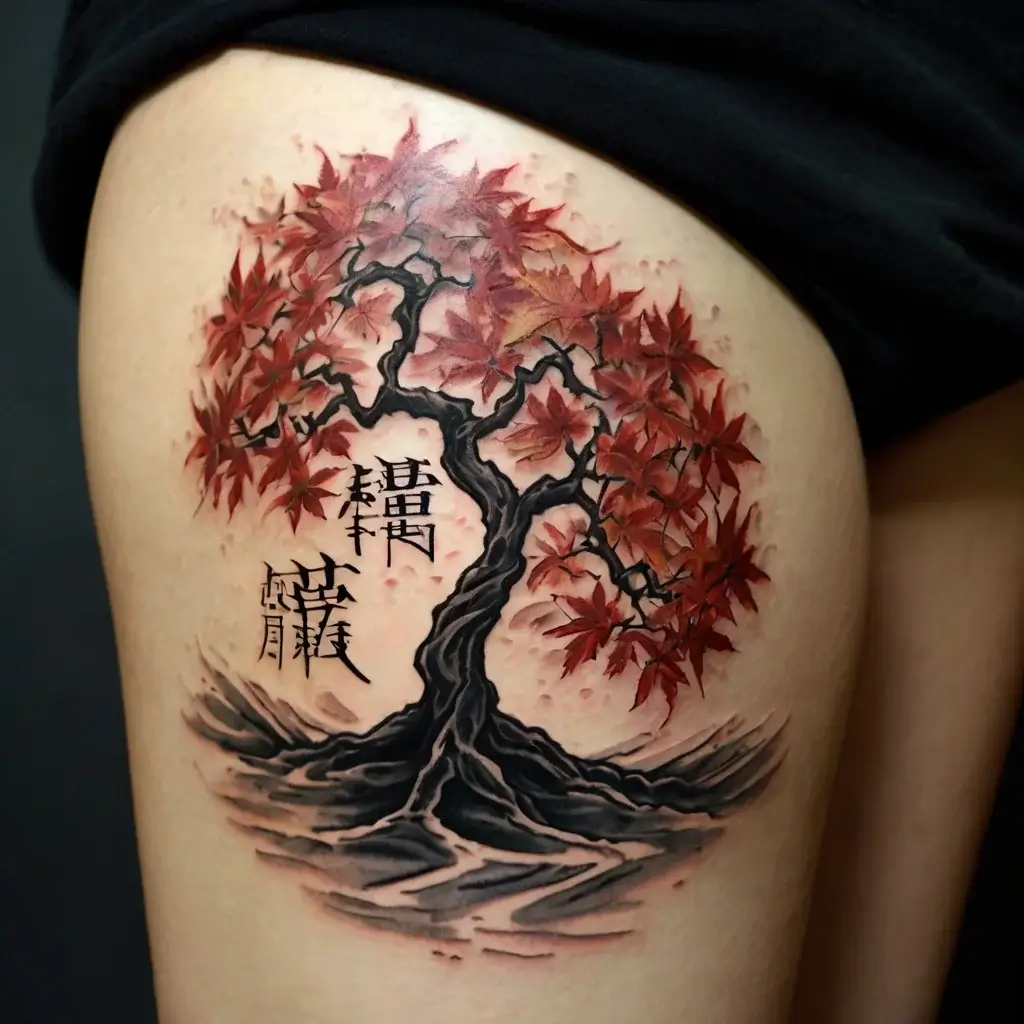
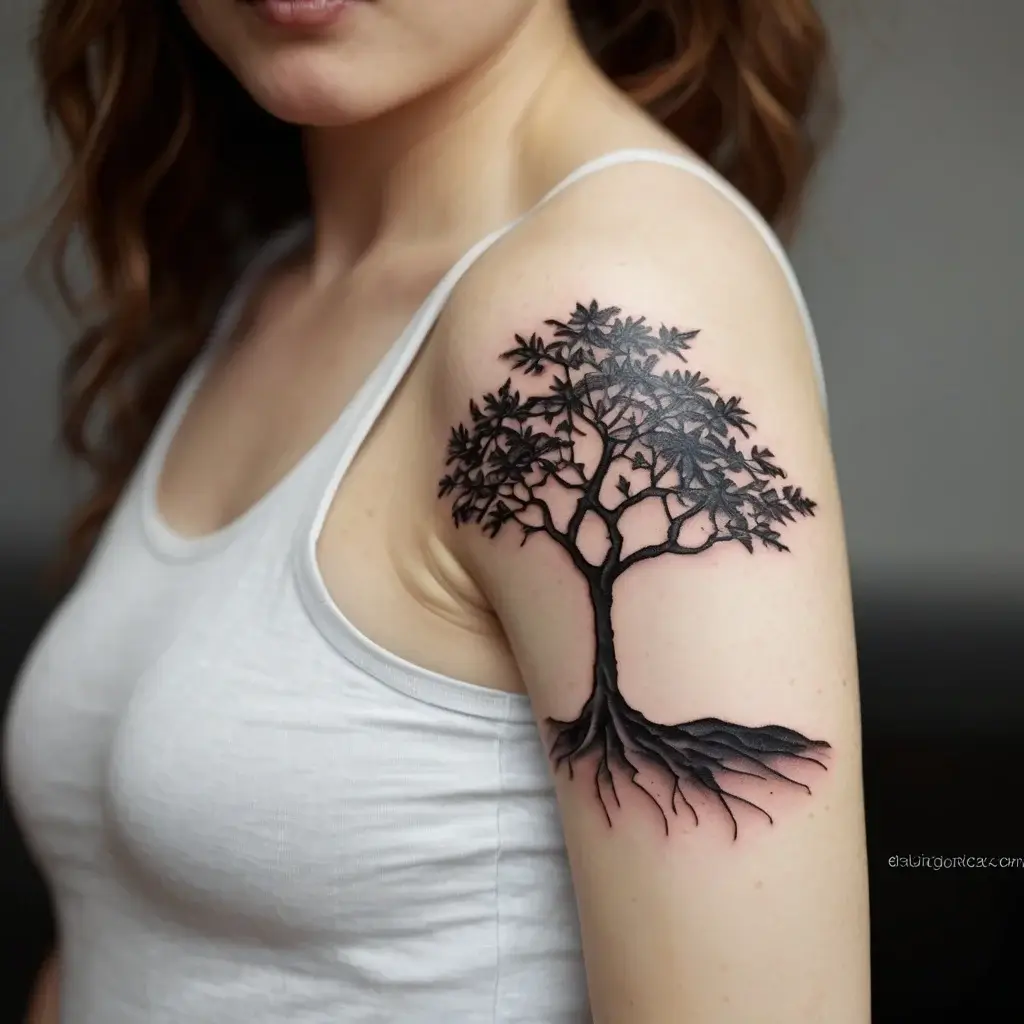
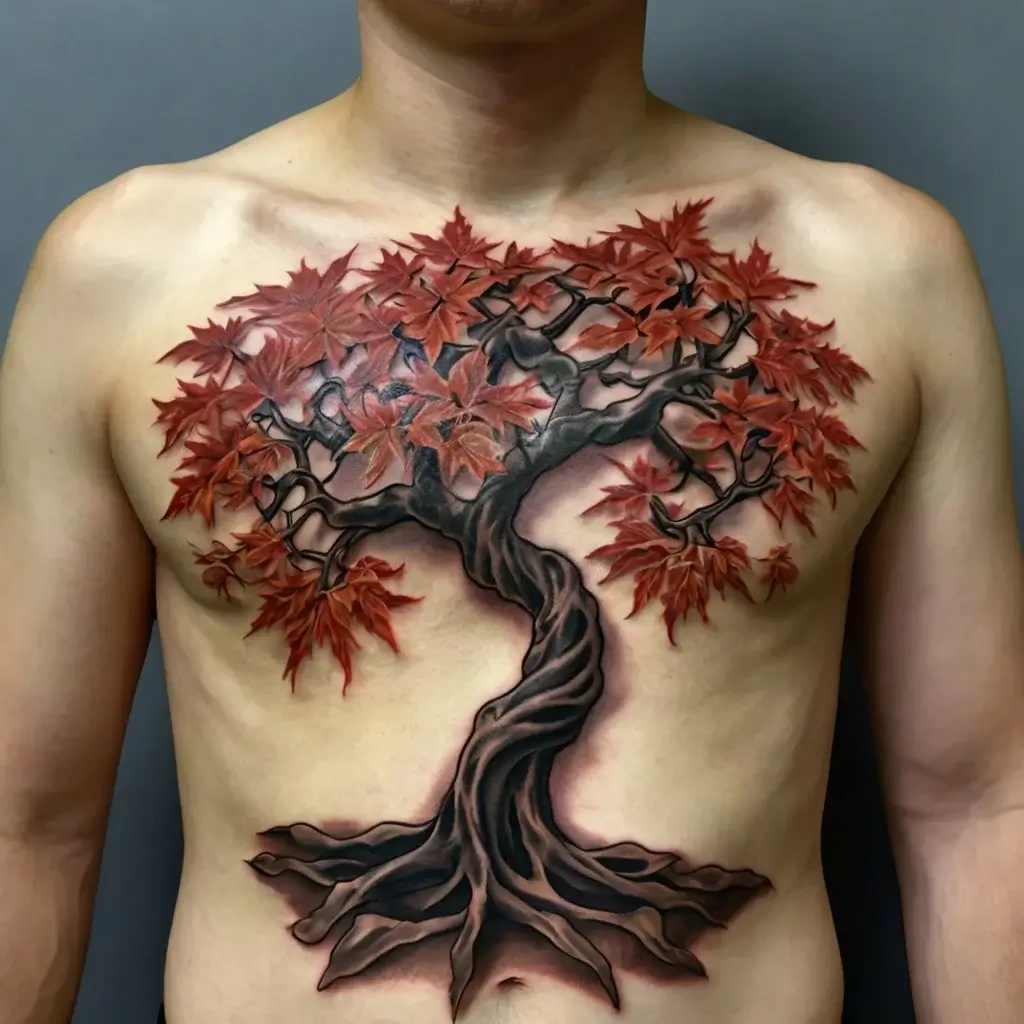
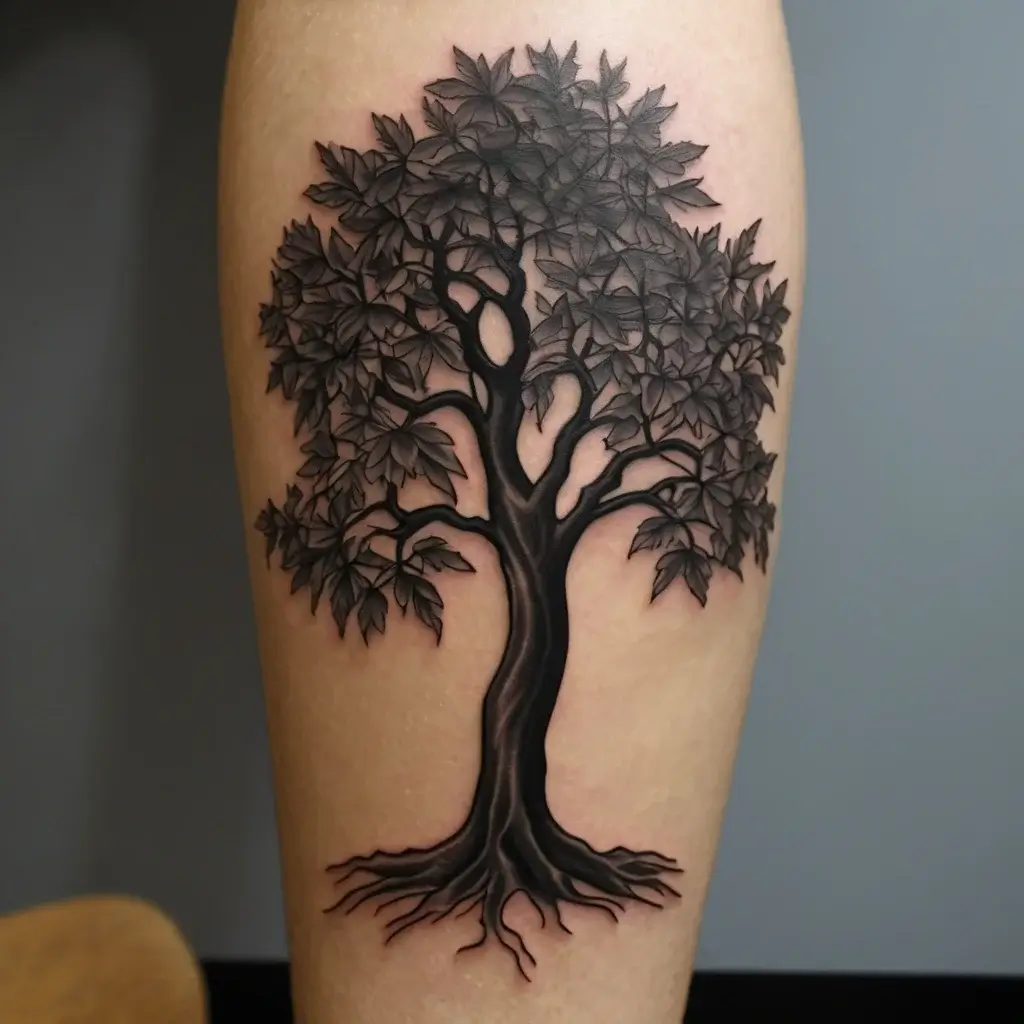
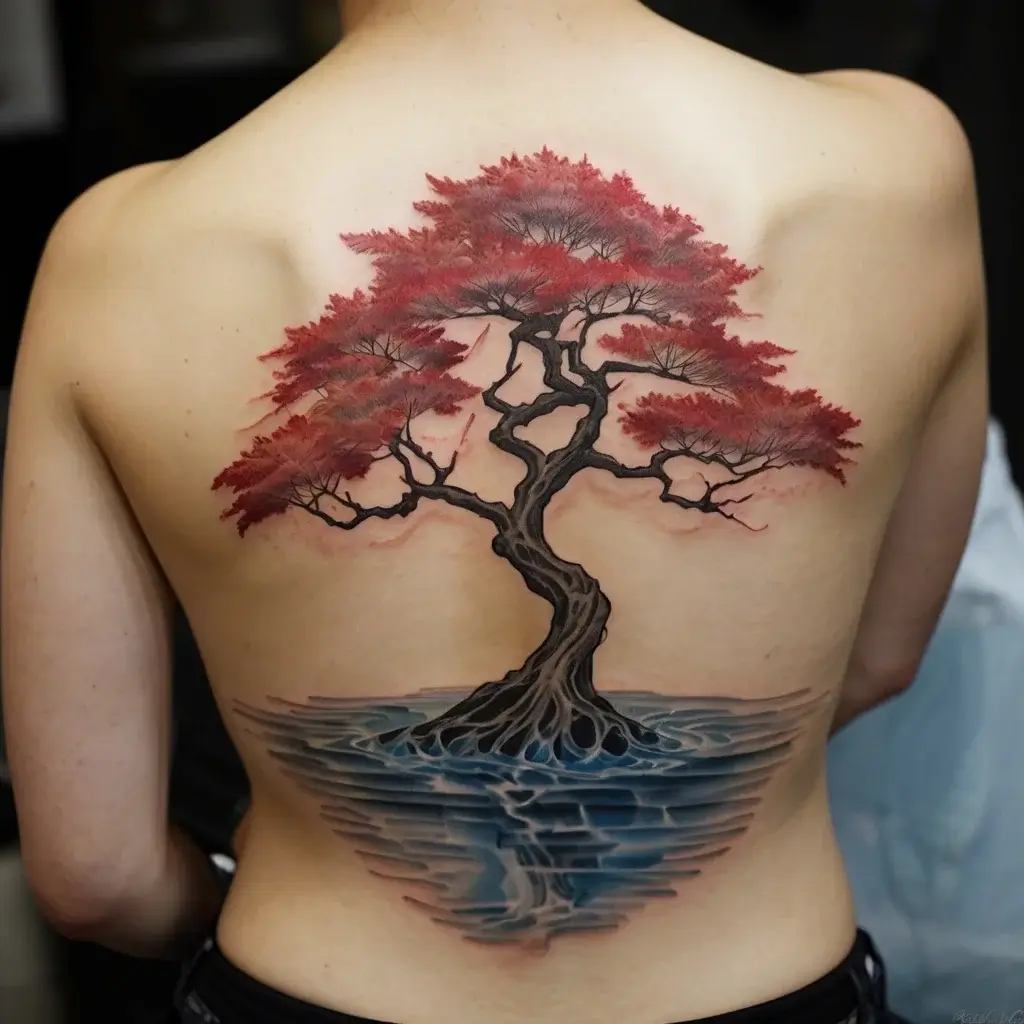
10 Design Ideas for Japanese Maple Tree Tattoos
1. Single Maple Leaf in Red
A simple yet striking choice, a single red Japanese maple leaf captures the beauty of autumn. It works well as a small tattoo on the wrist, ankle, or behind the ear.
2. Full Maple Tree with Falling Leaves
For a larger, more detailed tattoo, consider a full Japanese maple tree with leaves drifting to the ground. This design can cover the back, shoulder, or thigh, representing change and the passage of time.
3. Maple Leaf with Water Elements
Pair a Japanese maple leaf with a water element like waves or koi fish. The flowing water adds movement and can symbolize the balance between strength and calmness.
4. Geometric Maple Leaf
For a modern twist, go for a geometric design. Clean lines and sharp angles give the delicate leaf a bold, abstract feel, ideal for a unique, personalized look.
5. Maple Tree and Mountain Scene
Combine a Japanese maple tree with a mountain landscape. This design brings together the themes of nature, strength, and stability, making it a meaningful full or half-sleeve tattoo.
6. Minimalist Outline of a Maple Leaf
A thin, minimalist outline of a maple leaf is subtle but meaningful. It’s perfect for someone who wants a small, elegant tattoo that still carries depth.
7. Maple Leaf with Moon and Stars
Adding celestial elements like a crescent moon or stars gives the maple leaf a dreamlike quality. This design often represents change, guidance, and spiritual growth.
8. Japanese Maple Tree with Blossoms
A blend of the maple tree and cherry blossoms combines two powerful symbols of beauty and life’s cycles. It can symbolize both strength and delicate beauty.
9. Maple Leaf in Watercolor Style
Using a watercolor tattoo style with splashes of red, orange, or yellow brings the vibrant colors of fall to life on your skin. This style captures the leaf’s soft and flowing nature.
10. Maple Leaf with a Quote
Pair your maple leaf tattoo with a short quote that resonates with you. Words of wisdom or a personal mantra can add even more meaning to your design.
Conclusion
Japanese maple tattoos are more than just beautiful designs. They carry deep meaning, symbolizing change, growth, and the beauty of life’s fleeting moments. Whether you’re drawn to the vibrant colors of autumn or the quiet strength of the tree itself, a Japanese maple tattoo can be a personal and powerful way to express who you are. With so many design options, from simple leaves to full tree scenes, there’s a style that fits every taste. In the end, the tattoo serves as a reminder of life’s constant flow and the balance we all seek.
